
















The Albanese Government is providing fnancial assistance to communities affected by ex-Tropical Cyclone Alfred through the Disaster Recovery Allowance (DRA).
This allowance offers up to 13 weeks of income support for eligible workers and sole traders who have suffered income loss as a direct result of the disaster.
Eligibility and Affected Areas
The DRA will be available in:
Queensland (14 Local Government Areas)
• Brisbane, Fraser Coast, Gold Coast, Gympie, Ipswich, Lockyer Valley, Logan, Moreton Bay, Noosa, Redland, Scenic Rim, Somerset, Southern Downs, and Sunshine Coast.
New South Wales (17 Local Government Areas and Lord Howe Island)
• Armidale, Ballina, Bellingen, Byron, Clarence Valley, Coffs Harbour, Dungog, Glen Innes Severn, Kempsey, Kyogle, Lismore, MidCoast, Nambucca, Port Macquarie-Hastings, Richmond, Tenterfeld, and Tweed.
• Lord Howe Island, including any islands within a 3 Nautical Mile radius.
Individuals who live or work in these areas and have experienced a loss of income due to the disaster are eligible to apply.
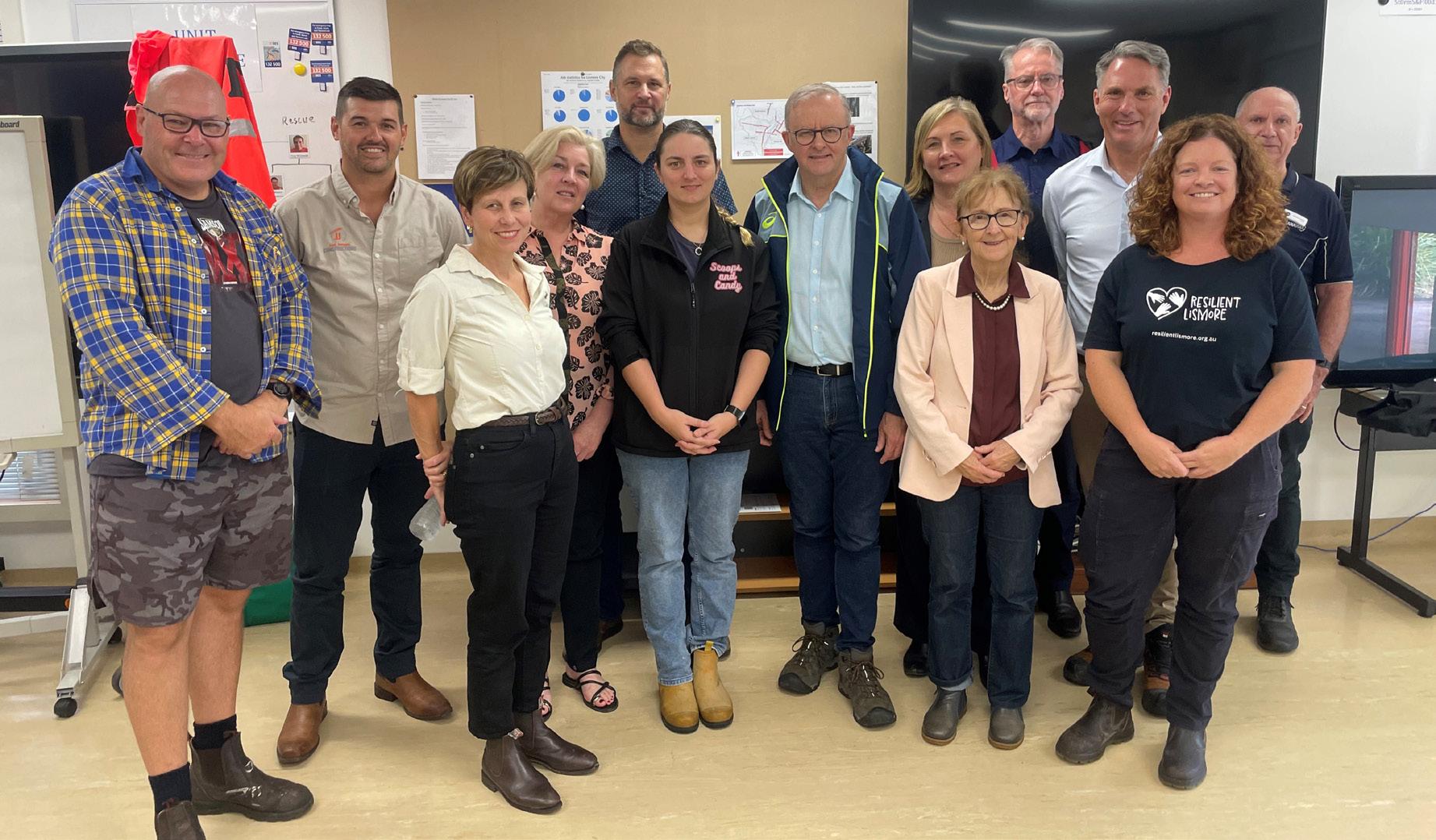
To qualify for the DRA, a person’s income must have fallen below the average Australian weekly income as a result of the foods.
Application Process
• Applications opened at 2 PM local time on Tuesday, 11 March.
• Before applying, individuals can check eligibility on the Services Australia website at: Natural Disaster Support (Services Australia).
• The easiest way to apply is online via myGov.
• Those needing assistance with their claim can call the Australian Government Emergency Information Line at 180 22 66.
Government Support and Statements
Prime Minister Anthony Albanese:
“At the worst of times, we see the best of the Australian character. That’s exactly what we’ve seen in the past week in Queensland and New South Wales.
“My message to these communities in this
diffcult time is we’ve got your back and will support you through the recovery.”
communities who have lost income due to this weather event.
“The Government
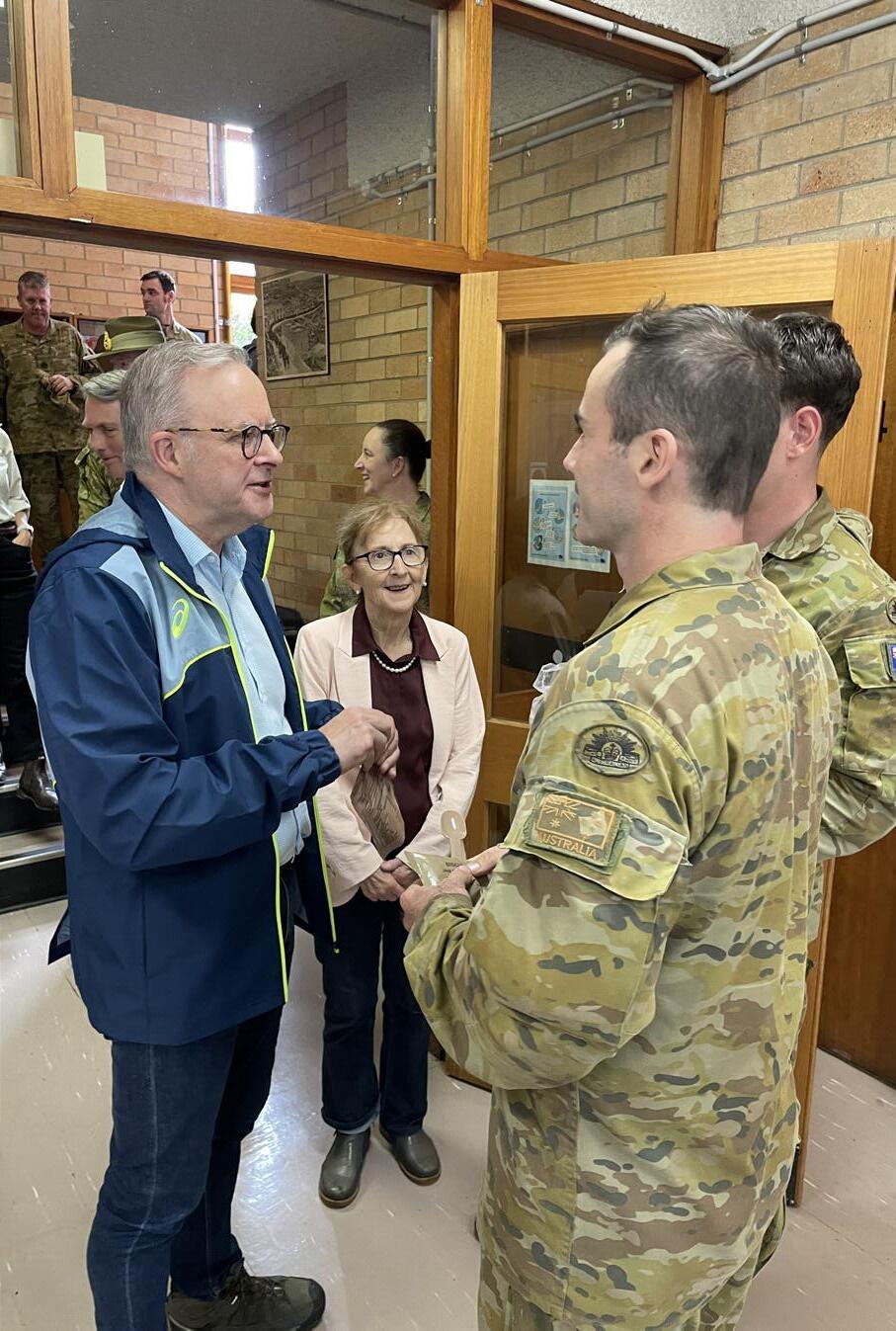
Minister for Government Services
Katy Gallagher:
“The past week has been tough for many people in South East Queensland and Northern New South Wales. While the rain continues, it’s essential that we support
is focused on helping communities get back on their feet – we will provide up to 13 weeks of income support through the Disaster Recovery Allowance to people who have lost work.
“If you live in an impacted area and your
employment has been affected, please visit the Services Australia website to check if you are eligible.”
Minister for Emergency Management Jenny McAllister:
“It’s been a challenging time for communities, with heavy rainfall and severe wind damaging roads, isolating residents, and making it diffcult for people to get to work.
“The Disaster Recovery Allowance provides eligible workers whose income has been disrupted with up to 13 weeks of income support, while they recover from this event.
“We’re acting quickly to make fnancial assistance available to impacted individuals and families.
“Whether you live in New South Wales or Queensland, the Albanese Government is working with all levels of government to support communities when they need it most. We are here for the long haul.”
SAMANTHA ELLEY
Buybacks for the MidRichmond don’t work.
That was the clear message put to Federal MP for Page, Kevin Hogan and Shadow Minister for Emergency Management, Perin Davey from local business owners and councillors last week held by the Woodburn and Business Community Chamber.
“The Woodburn community is really disappointed and disillusioned about what we see as the failed house buyback process that has happened around the region,” said Mr Hogan.
“There were two choices we had three years ago to protect the community.
“Either we remove everyone from the foodplain or we food mitigate and protect people from the food because the engineering solutions that we would do to make a food lower.”
Mr Hogan continued
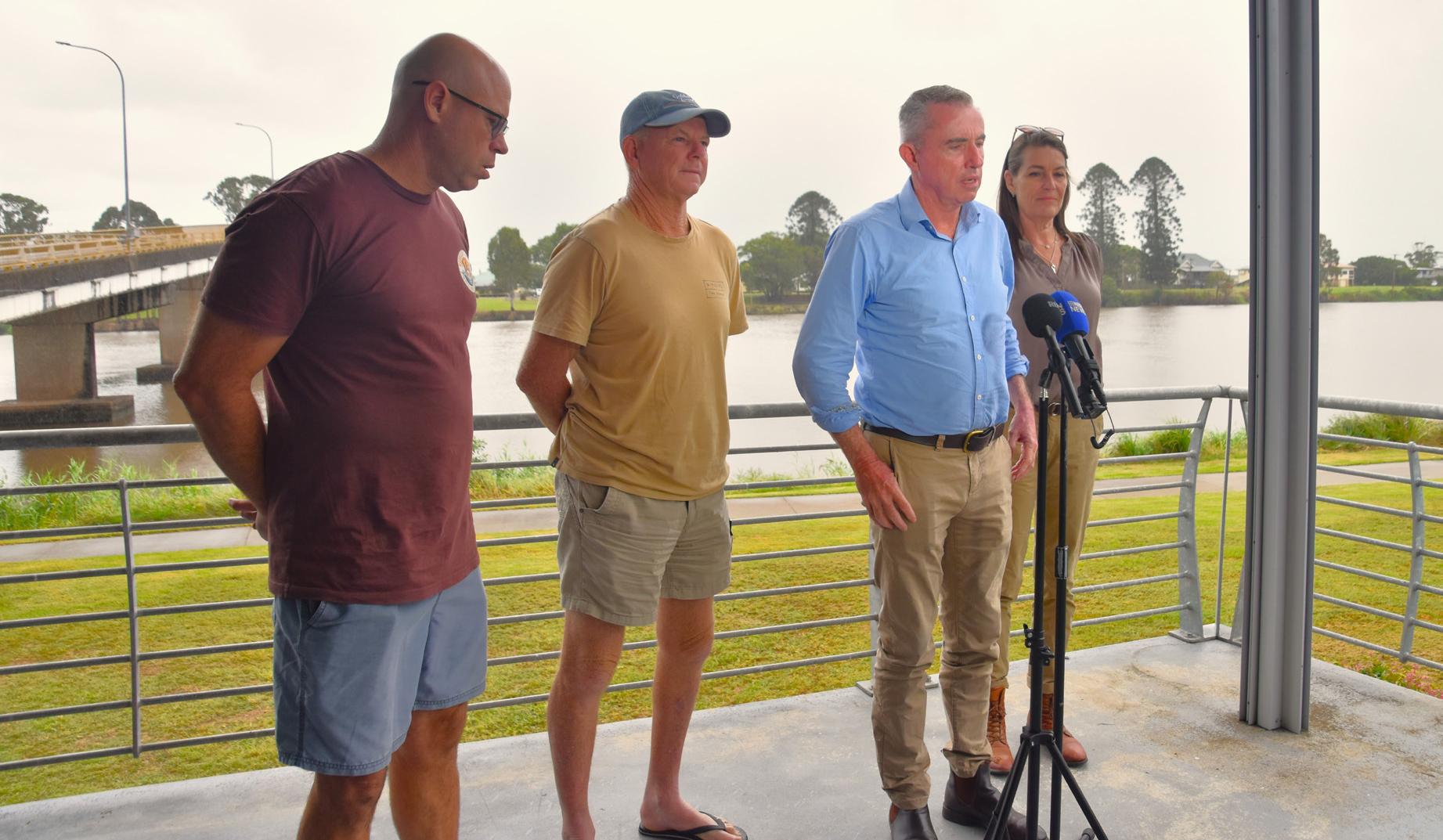
saying the buyback process, especially in Woodburn and Broadwater, has been an utter failure.
“What we have three years on, no mitigation work…we have this halfcocked buyback scheme going on where you have half the street gone over here…a lot of people in lower houses still there,” he said.
Richmond Valley
Councillor Robert Hayes agreed, saying the Woodburn community is not happy with the buyback scheme, saying they would prefer retrofts and house raises.
“The Woodburn and Broadwater communities are unique as we don’t have higher land to re-establish on,” he said.
“We don’t want to see the town die by these people removing
themselves from the town because they can’t remain where they are.
“We’d like to see the state and federal government support us in leaving people on the land they live in but making them safe by raising houses and retroftting.”
Local pub owner, Daniel Simpson said a decent strategy is needed as the town is still here.
“We are seeing our school enrolments fall,” he said.
“We’re down from 140 at the local public school to 90, which means we lose teachers jobs.
“I am unable to house my employees in this town but there are houses just sitting there not being lived in that have been rebuilt, but now been bought back and sat there.
“We don’t know what happens with that land.”
Mr Simpson said cities don’t disappear when there are earthquakes, they rebuild.
“We need some plan on how to revitalise our town into the future,” he said.
Senator Davey said government needed to listen to the residents.
“The buyback alone program is not ft for purpose for this community,” she said.
“Retroft should be on the table for some of those houses.”
Senator Davey said the process so far was actually causing harm to the community as families leave town.
Mr Simpson said the town has bounced back, as far as trade at his business is concerned.
“We also took an approach that we couldn’t rely on the town, so we invested and put a brewery in our town,” he said.
“What the town needs is core population and what the buyback is doing is taking away our core population.”
ROBERT HEYWARD
As communities across southeast Queensland and northern New South Wales clean up after Tropical Cyclone Alfred, experts from the Australian Conservation Foundation (ACF) are available to discuss the links between cyclones and human-induced climate change.
Gavan McFadzean, ACF’s Climate and Energy Program
Manager, highlights the increasing risks posed by a warming climate:
“The world’s oceans are warming at an alarming rate, leading to more intense cyclones that move more slowly and form further down the coast.”
Cyclones derive their energy from warm sea surface temperatures, which then fuel destructive weather patterns when they reach land.
Tropical Cyclone
Alfred formed in the Coral Sea in late February, during a period when sea surface temperatures were nearly 1°C above average.
McFadzean further explains:
“Research indicates that climate change is expanding the regions where cyclones can develop, leading to increased cyclone activity further south.”
“The past year, 2024, was the warmest ever recorded for global ocean

temperatures, following a record-breaking 2023.”
Cyclones, Flooding, and Intensifed Rainfall Scientifc studies show that climate change is increasing the likelihood of extreme fooding events due to:
• Warmer air holding more moisture, leading to heavier rainfall.
• Cyclones remaining stationary for longer periods, dumping excessive rain over single locations, often referred to as “rain
bombs.”
“As climate-driven disasters become more frequent and severe, fossil fuel industries continue to proft, while Australian communities bear the cost of recovery and rebuilding.”
Call for Stronger Climate Action
McFadzean stresses the need for decisive policy action:
“Despite the growing climate risks, neither major political party is holding major


polluters—such as Santos and Woodside— accountable for their massive fossil fuel expansions, which continue to put Australian communities at risk.”
“For the sake of public safety, governments must commit to stronger climate targets and halt approvals for new coal and gas projects.”
JEFF GIBBS
The panic shopping following Tropical Cyclone Alfred refects a common response to disaster uncertainty and supply chain disruptions. When extreme weather events like this occur, people fear shortages, leading to stockpiling behaviour—but is it necessary? Let’s break it down.
Why the Panic Shopping?
1. Supply Chain Disruptions: Flooded roads, power outages, and damaged infrastructure slow down deliveries, leaving supermarket shelves empty or understocked.

Reality Check: Are You an Island?
• Supply chains recover faster than we think. Supermarkets, suppliers, and local producers work rapidly to restock essentials as roads reopen.
• Overbuying makes it worse. Panic buying creates artifcial shortages, making it harder for vulnerable residents and emergency responders to access necessities.
normal shopping routine to allow supply chains to catch up.
Check offcial updates. Use Live Traffc NSW, SES, and supermarket alerts to monitor road access and stock availability.
Support local suppliers. Many small businesses and farms provide fresh produce when major retailers experience delays.
2. Psychological Fear of Scarcity: People worry supplies won’t be replenished quickly, triggering mass buying of essentials like bread, milk, water, and toilet paper—even if shortages are temporary.
hearing reports of limited stock fuels the panic, creating a self-fulflling prophecy.
3. Media & Social Infuence: Seeing images of empty shelves or
4. Past Experiences: Residents affected by past foods and cyclones remember previous shortages and overcompensate by buying more than needed.
Amid ongoing supply shortages following ex-Cyclone Alfred, local farmers have stepped in to support the community by donating organic produce outside a depleted supermarket.
Community Generosity in Action
With supermarket shelves left bare due to weather-related disruptions, farmers from across the region gathered outside a local store to offer fresh, homegrown produce to residents in need.
• The donated goods included seasonal fruits, vegetables, and herbs, all grown locally.
• Farmers emphasized the importance of community support during diffcult times, ensuring that fresh and
nutritious food remains accessible.
• Residents expressed immense gratitude, highlighting how this act of generosity eased their burden in the wake of the cyclone’s impact.
Weather-Related Supply Shortages
Many supermarkets have struggled with delayed deliveries and stock shortages following severe weather. Road closures and logistical challenges have made restocking diffcult, prompting local producers to step in and support their communities.
A Growing Movement
The initiative has inspired other farmers and food producers to consider similar donation efforts. Local community
groups and organisations have also joined forces to coordinate food distribution and support affected households.
Looking Ahead
While supply chains work to recover, local farmers encourage continued support for fresh food markets and sustainable local agriculture.
Residents impacted by shortages are advised to stay updated on supermarket restocking efforts and to seek assistance from community-led initiatives providing essential goods.
This heartwarming response underscores the resilience and generosity of local farmers and the strength of community spirit in times of need.
5. Community Isolation & Road Closures: If towns are cut off, the mindset shifts to self-suffciency, increasing demand for non-perishables and essentials.
• Community support is key. Farmers and local businesses often step up with food donations—as seen with recent efforts outside supermarkets in cyclone-hit areas.
What Should You Do Instead?
Buy what you need, not what you fear. Stick to a
Share resources. If you have excess, help a neighbor, elderly person, or community group in need.
While self-suffciency is essential, panic buying isn’t. A measured response helps ensure everyone gets what they need, keeping the community strong and resilient post-cyclone.
A 44-year-old man is set to appear before Byron Bay Local Court Moinday March 10th, charged with assault occasioning actual bodily harm following an incident at an ex-Cyclone Alfred emergency evacuation centre.
Incident Details
• Time and Location: Tweed/Byron police responded to a call at Mullumbimby’s evacuation centre at the Mullumbimby ExServices Club pictured on Dalley Street around 8:00 PM on Sunday.
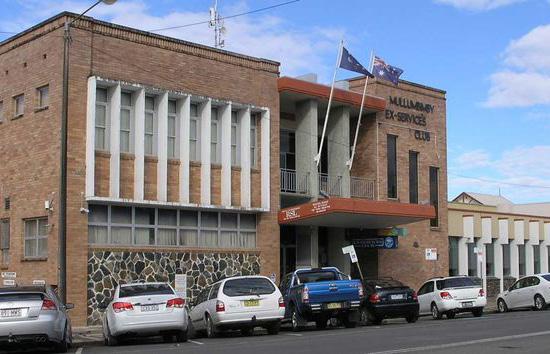
• Altercation: Upon arrival, offcers were informed that two men had been involved in an altercation.
• Injuries and Medical Response: A 26-year-old man sustained facial injuries and was treated by paramedics on scene before being transported to Byron Bay Hospital in stable condition.
• Arrest and Charges: Police arrested the 44-year-old suspect, transported him to Byron
Bay Police Station, and charged him with assault occasioning actual bodily harm.
• Court Appearance: The accused was refused bail and is set to appear before Byron Bay Local Court today. Further updates on the case will be provided as more information becomes available.
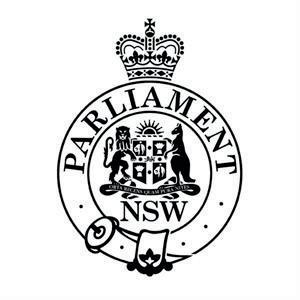

IAN ROGERS
The Ballina Resource Recovery Centre has reopened following a temporary closure due to severe weather. To assist residents impacted by Tropical Cyclone Alfred, Ballina Shire Council has introduced free storm waste drop-off services and supplementary bin collections.
Free Drop-Off for Cyclone-Related Waste
Ballina Shire Council is offering a free storm waste drop-off service at the Ballina Resource Recovery Centre, located at 167 Southern Cross Drive. The centre is open daily from 8:00 AM to 4:00 PM for residents to dispose of:
• Green waste from storm damage, including fallen branches and vegetation.
• Building waste caused by storm damage or from food-affected properties.
• Excess household waste from missed collections on Thursday 6 March and Friday 7 March.
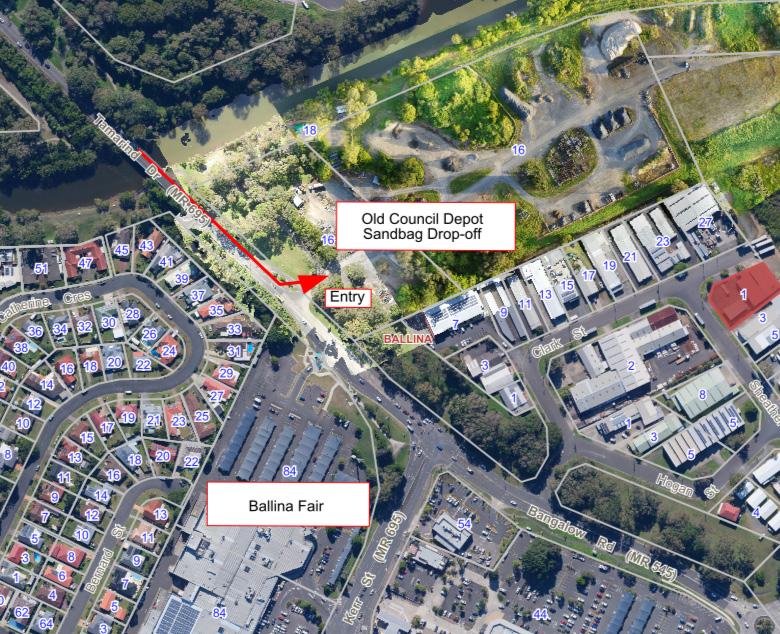
This service is strictly for cyclone-related waste. General household waste and non-storm-related building debris are not eligible, and standard disposal fees will apply. Residents must provide their residential address to assist the Council in recovering waste management costs from state and federal governments. Please
have this information ready or written down for the weighbridge offcer upon arrival. Due to high demand, wait times at the Resource Recovery Centre may be longer than usual. The Council appreciates the community’s patience and cooperation as cleanup efforts continue.
Important: Do not place cyclone-related waste on
the kerbside. Residents unable to transport waste can contact the Waste Management Centre at (02) 6686 1287 to discuss alternative arrangements. Supplementary Kerbside Bin Collection Services
To accommodate missed collections, Council has scheduled supplementary kerbside bin collections:
• Bins missed on
Thursday 6 March will be collected on Tuesday 11 March (Landfll red and FOGO green lid bins in urban areas; landfll red and yellow lid bins in rural areas).
• Bins missed on Friday 7 March will be collected on Wednesday 12 March (Landfll red and FOGO green lid bins in urban areas; landfll red and yellow lid bins in rural areas).
• Regular bin collections for these affected properties will resume on Thursday 13 and Friday 14 March (Yellow and green bins in urban areas; red bins in rural areas).
Residents may also drop off excess household waste from missed bins at the Resource Recovery Centre free of charge.
Sandbag Disposal
Residents are encouraged to dispose of sandbags responsibly once the risk of severe weather and fooding has passed.
Disposal Guidelines:
• Empty sandbags should be placed in the general waste bin. Do
not place full sandbags in your general waste bin.
• Full sandbags can be dropped off at the old Council depot on Tamarind Drive, opposite Ballina Fair. A sign will be placed at the location to indicate the drop-off point.
• Council will also conduct a kerbside collection for residents unable to transport sandbags to the depot.
Community Cooperation and Further Updates
Ballina Shire Council appreciates residents’ patience and cooperation as recovery efforts continue. Further updates on waste disposal, bin collections, and sandbag disposal will be provided as necessary.
For the latest information, please visit ballina.nsw.gov.au.
Picture left: Full sandbags can be taken to Council’s old depot location for proper disposal. Access is via the east-bound lane on Tamarind Drive. Westbound traffc should detour via the roundabout at intersection of North Creek Road and Tamarind Drive.



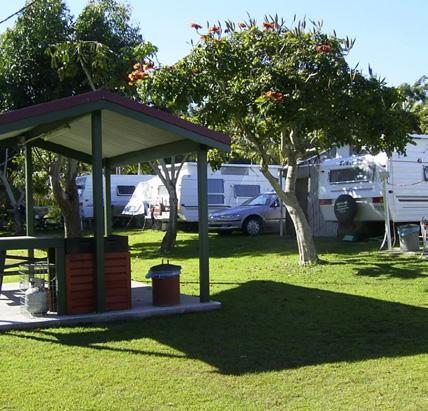

This March, Share the Dignity is celebrating 10 years of advocacy and action in the fght against period poverty in Australia. Despite a decade of dedicated work ensuring dignifed access to period products, demand continues to rise at unprecedented levels.
A National Movement for Change
Through its annual campaigns, advocacy for improved education and legal frameworks, and a strong network of volunteers, supporters, and stakeholders, Share the Dignity has transformed from a grassroots initiative into a nationwide movement.
Major campaigns include the bi-annual Dignity Drives in March and August, which collect and distribute period products to those in need. The organisation has gained corporate support from partners such as Woolworths, backing from government fgures, and endorsements from Australian infuencers
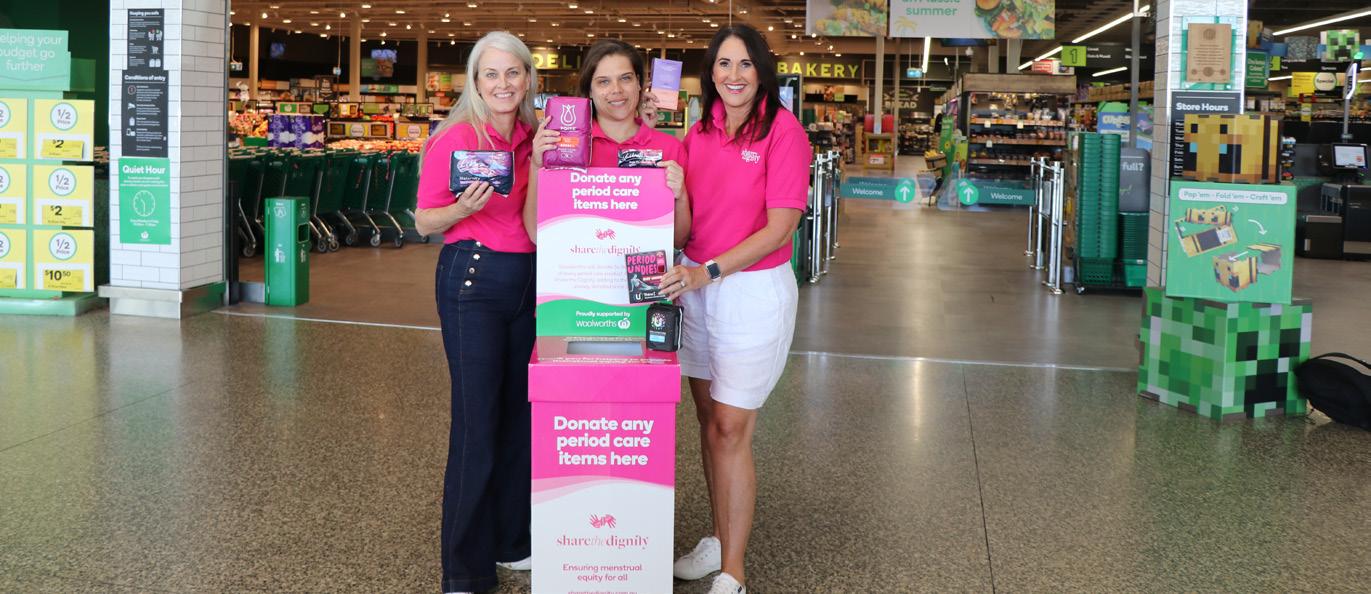
and public fgures.
Founder and Managing Director Rochelle Courtenay acknowledges that, while the organisation has made signifcant progress, the cost-of-living crisis is exacerbating period poverty.
“We’ve accomplished so much over the last 10 years, and I’m incredibly proud of what we’ve achieved, but there is still so much more to do,” Ms Courtenay said.
“The cost-of-living crisis has placed immense pressure on vulnerable Australians, and we must rally together to ensure no one has to face period poverty alone.
“No woman, girl, or
person who menstruates should have to experience the indignity of having to substitute period products.”
The Growing Need for Support
According to Compare the Market’s Household Budget Barometer 2024, 25% of Australians are concerned about the rising cost of basic essentials, while 45% report experiencing fnancial hardship at least once a week.
The 2024 Bloody Big Survey, conducted by Share the Dignity, revealed that 64% of respondents have struggled to afford period products.
“Our mission has always been to ensure
that no one goes without period products, but the reality is that demand is growing faster than we can meet it,” Ms Courtenay said.
“As we refect on our 10-year milestone, it is clear that our work is more critical than ever, and more people than ever need our help.”
The Impact of Period Poverty
Darian Brooker, who has personally experienced period poverty, recalls the distress of not having access to period products at school.
“I still vividly remember bleeding through my clothes and having period blood running down my leg,”
she said.
“I would wear multiple pairs of underwear and wrap up a huge amount of toilet paper just to catch the school bus.”
She believes that having access to proper period products would have drastically changed her experience with menstruation, providing her with dignity and confdence.
How Australians Can Help
This March, Share the Dignity is collecting period products and incontinence aids to support those in need.
• Donations can be made in pink collection boxes at all Woolworths supermarkets Australiawide.
• Woolworths will also donate 5 cents from every period product purchased throughout March, adding to the $3,157,033 already donated since the partnership began in 2019.
• Thanks to these contributions, 107 Dignity Vending Machines have been installed nationwide, dispensing free period
packs to those in need. These initiatives ensure that individuals experiencing or at risk of homelessness, domestic violence, or fnancial hardship do not have to endure the indignity of using unsafe alternatives in place of proper period products.
Where Donations Go All period products and incontinence aids collected during the Dignity Drive will be distributed to 3,000+ charity partners, including:
• Community groups
• Domestic violence refuges
• Homeless shelters
• Organisations supporting vulnerable individuals
Join the Fight Against Period Poverty
Share the Dignity is calling on all Australians to support those in need by donating period products, funds, or their time.
Make a difference this March by donating to Share the Dignity’s Dignity Drive. Find your nearest collection point here.

ROBERT HEYWARD
Public transport services will resume in parts of northern New South Wales tomorrow, providing vital support to communities less affected by the recent tropical low.
Transport for NSW Coordinator-General Howard Collins has urged commuters to check whether their usual bus and train services are operational before travelling.
“Communities on the Mid North Coast, including Coffs Harbour, Kempsey, and Port Macquarie, will see the reinstatement of some bus services,” Mr Collins said.
“This includes all regular route services in Port Macquarie, 33 regular route services in Coffs Harbour and Kempsey Town, and 285 school bus services in Port Macquarie.
“Additionally, on-demand transport services in Lismore and Coffs Harbour
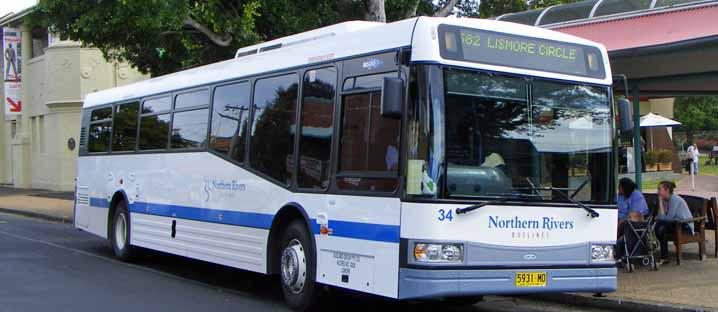
will resume, providing more travel options within these local communities.”
However, in the Northern Rivers region, including Tweed, Grafton, Yamba, Kyogle, Ballina, and Byron, more than 1,000 school services and 109 regular bus routes will remain suspended on Monday.
Transport for NSW continues to coordinate efforts with the NSW Department of Education via the State Emergency Operations Centre to ensure a comprehensive government response.
Passengers are
encouraged to check the latest updates on Transportnsw.info or through transport apps.
NSW TrainLink Services Update
NSW TrainLink Chief Executive Roger Weeks confrmed that limited coach services will also resume from tomorrow.
“Following last week’s service suspensions due to hazardous road conditions, we are now able to restart some operations,” Mr Weeks said.
“Limited coach services will be available between Taree and Grafton, with adjusted stopping
Protect Your Home and Save with NSW Battery Incentives!
In today’s world of unpredictable weather and rising energy prices, it’s more important than ever to secure your home’s power. The NSW Government is ofering new incentives to help you install a residential battery storage system with or without a Virtual Power Plant (VPP) with benefts that go beyond just power protection.
Why Invest in a Battery System?
• Stay Powered During Blackouts: Keep your lights on and essential devices running when the grid goes down.
• Save on Your Energy Bills: Use your battery to store solar energy when rates are low and use it during peak times for savings.
• Earn Money Back: Sell excess energy to the grid during peak hours for a fnancial return on your investment.
NSW Battery Incentives for Homes & Businesses with Solar
You could receive up to $3,600* of the cost of installing a battery, depending on the size, plus additional savings for connecting your battery to a VPP.
For Homes & Businesses Without Solar
This incentive can be included in a new solar and battery system installation, making it easier than ever to get started.
By installing batteries across the state, we’re helping create a more reliable grid, reducing our reliance on fossil fuels, and working toward a 70% emissions reduction by 2035.
Take advantage of these limited time incentives and future proof your home today! For full terms and conditions and to learn how much you can actually save call us or visit saegroup.com.au to learn more.




patterns. However, at this stage, Nambucca Heads and Macksville will not be serviced by NSW TrainLink coaches.”
Rail replacement services to Brisbane will be arranged while the Australian Rail Track Corporation (ARTC) continues to keep the North Coast rail line closed. Currently, no rail traffc is operating north of Taree or south of Acacia Ridge.
ARTC has advised that network inspections will be conducted tomorrow via helicopter. If deemed safe, ground crews will assess the extent of
any damage and begin necessary repairs. Once a full assessment is completed, ARTC will provide an estimated timeline for service restoration.
Road Safety and Closures
Transport for NSW is working closely with emergency services to reopen major roads as safely and effciently as possible. Safety remains the highest priority for all road users, including Transport crews and emergency service personnel.
Before reopening, major roads impacted by
the severe weather must undergo comprehensive safety assessments and inspections. In some cases, roads may reopen with restrictions, such as load limits or speed reductions, until further repairs are completed.
“We continue to advise against non-essential travel,” Mr Collins added. “If you must drive, please slow down and adjust to the conditions. Never drive into or attempt to enter foodwaters. Always follow the directions of traffc crews.”
For the latest road conditions, visit www.livetraffc.com, download the Live Traffc NSW app, or call 132 701.
For information on evacuation centres and emergency updates, visit the NSW SES website at www.ses.nsw.gov.au/ or download the Hazards Near Me app.
For up-to-date weather warnings, visit the Bureau of Meteorology website at www.bom. gov.au/

Get in touch with SAE Group today to find

ROBERT HEYWARD
The Minns Labor Government is set to trial a new Year 1 Number Screening Check across 150 NSW public schools as part of its strategy to improve student outcomes following declining NAPLAN results under the previous government.
This teacher-led assessment, taking approximately 10-15 minutes per student, is designed to evaluate foundational numeracy skills crucial for future success in mathematics. The initiative aims to facilitate early intervention, ensuring all students develop essential number sense skills from the start of their education.
Identifying Early Numeracy Gaps
The screening check will help teachers pinpoint areas where students may need additional support, such as:
• Counting and
number recognition (e.g., recognizing and verbalizing numbers).
• Understanding number relationships (e.g., sequencing numbers correctly).
• Basic number operations (e.g., understanding how numbers can be combined and decomposed).
Students will complete 20-50 tasks assessing:
• Number knowledge – recognizing numerals and their values (e.g., identifying “13” and saying “thirteen”).
• Number relations –understanding numerical order (e.g., knowing that 5 comes before 6).
• Number operations – grasping basic addition and subtraction (e.g., knowing that 2 + 4 = 6).
Building on Initial Success
The offcial trial, launching in Term 2, builds on a November 2024 pilot conducted across 19 schools to refne the content,

structure, and mechanics of the assessment. Feedback from this expanded trial will further shape the program before wider implementation. To support schools, the Department of Education will develop resources to assist in both administering the check and intervening where necessary to address learning gaps.
The Year 1 Number Screening Check will complement the existing Year 1 Phonics Screening Check, giving teachers a comprehensive view of students’ early literacy and numeracy progress. This dual approach enhances the ability to provide timely, targeted support to students who may need it.
Keerong Public Hall Reserve Land Manager
Ever wondered who is responsible for keeping Crown reserves operating?
Countless facilities like showgrounds, local halls and parks are run by Statutory Land Manager Boards, made up of people just like you. People who understand the need and have a desire to manage public land and assets for the beneft of the entire community.
Your role as a Board Member is voluntary, but the rewards of giving something back to the community are priceless.
We are looking for a good mix of people with a variety of skills, however, sound business and fnancial management skills and objective decisionmaking expertise would be a distinct advantage.
Don’t let this opportunity to do something for yourself and your community pass you by – contact us today.
The Keerong Public Hall Reserve Land Manager manages the Reserve No. 87923 at Keerong notifed on 28-Aug-1970 for Public Hall. The term of appointment will be for a period not exceeding 5 years.
Application for membership can be made via portal.crownland.nsw.gov.au
All applications are required to be lodged by 10 April 2025
For further information contact: Chrissy Haslem on (02) 6642 9213 or go to reservemanager.crownland.nsw.gov.au
Statement from Deputy Premier and Minister for Education and Early Learning, Prue Car “Literacy and numeracy skills form the foundation of a strong education, setting children up for life. The Minns Labor Government is committed to ensuring students are on track early, so every child has the opportunity to succeed.
“That’s why we are trialling a Year 1 Number Screening Check, alongside the existing Phonics Screening Check, to help teachers assess students’ foundational skills and intervene when needed.
“We know early intervention is crucial—the sooner we identify students needing additional support, the greater their chance of success.
This initiative is a key part of our commitment to rebuilding public education and improving student outcomes after years of declining results under the previous government.”
This initiative represents a proactive step in strengthening early numeracy education, ensuring every child has the foundational skills needed for future academic success.
North Coast Population and Public Health urges residents to take precautions with drinking water, food, and foodwater safety following recent adverse weather impacting the Northern Rivers and Mid North Coast.
Drinking Water Safety
• Drinking water supplies can be affected by storms and foods.
• If a ‘boil water’ alert has been issued in your area, follow it strictly to prevent illness.
• If you are unsure about water quality, contact your water supplier or local council.
• If you rely on tank water, check for contamination from polluted foodwater and have it tested and treated if necessary.
• If in doubt, use alternative clean water until safety is confrmed.
Floodwater Risks and Safety Precautions
Regional Director Dr Valerie Delpech warns that foodwater is hazardous and should be avoided.
“We urge residents to take precautions if they come into contact with foodwater, as it can contain hazardous
substances, including raw sewage, chemicals, and other contaminants that can cause illness or infections such as leptospirosis.”
• Wear safety equipment (boots, gloves, and eye protection) during clean-up activities.
• Wash hands thoroughly after exposure to foodwater.
• Treat all foodwater as contaminated.
• Clean and cover scratches or cuts to prevent infection.
Food Safety Precautions
• Dispose of all food (including frozen food) that has come into contact with foodwater.
• Canned food may be kept if undamaged. If the can is dented or damaged, discard it.
• If in doubt, throw it out.
• If power is cut for more than four hours, food in refrigerators will no longer be safe to eat.
• Freezers may keep food safe for up to 24 hours if the door remains closed.
Household Safety After Flooding
• Look out for hazards such as contaminated medicines, hidden animals, and damaged structures.
• Prevent mould by drying out your home as quickly as possible.
• Have a licensed professional inspect food-affected electrical and gas equipment before use.
Emergency and Health Support Contacts
• Emergency assistance in foods/storms – Call SES at 132 500.
• Medical, police, or fre emergencies – Call Triple Zero (000).
• Medical advice and care – Call Healthdirect (24/7) at 1800 022 222.
• Crisis support – Call Lifeline Australia at 13 11 14.
• Support for children and young people – Call Kids Helpline at 1800 55 1800 or visit kidshelpline. com.au.
• Non-crisis support – Call Beyond Blue at 1300 22 46 36 or visit beyondblue.org.au.
• Additional mental health resources – Visit headspace.org.au or ReachOut.com.
For more advice on staying healthy during and after foods and storms, including printable fact sheets, visit the NSW Health website.




2 bed villa selling now

Visit our retirement village on Saturday, 22nd March and view our wonderful village facilities and display villa.
• Boutique community of 80 villas
• Large village centre and swimming pool
• Regular social activities and events
• Gated at night for your peace of mind
22nd March | 10am – 12pm To
ROBERT HEYWARD
The Albanese and Minns Labor Governments have reached a landmark agreement to fully and fairly fund New South Wales public schools.
Under the Heads of Agreement signed today, the Commonwealth will increase its contribution to the Schooling Resource Standard (SRS) by an additional 5%, bringing its share from 20% to 25% by 2034.
This follows New South Wales’ commitment to reaching 75% of the SRS by 2025—two years ahead of the previous government’s timeline.
As a result, NSW public schools will receive an estimated $4.8 billion in additional Commonwealth funding over the next decade, marking the largest federal investment in NSW public education to date.
Commitment to Educational Excellence
The agreement also ensures that NSW
removes the 4% deduction for indirect school costs, such as capital depreciation, guaranteeing full funding for public schools over the life of the agreement. This funding is tied to targeted reforms aimed at improving educational outcomes, including:
• Individualised student support to help children catch up and stay on track.
• Evidence-based teaching practices to enhance learning outcomes.
• Expanded mental health and wellbeing services to support students and staff.
Reform-Driven Investment
This is not an unrestricted funding increase. The Agreement will be implemented through a NSW Bilateral Agreement, ensuring that funding supports key initiatives, such as: • Early identifcation of learning needs, including Year 1 phonics and numeracy assessments.
• Targeted
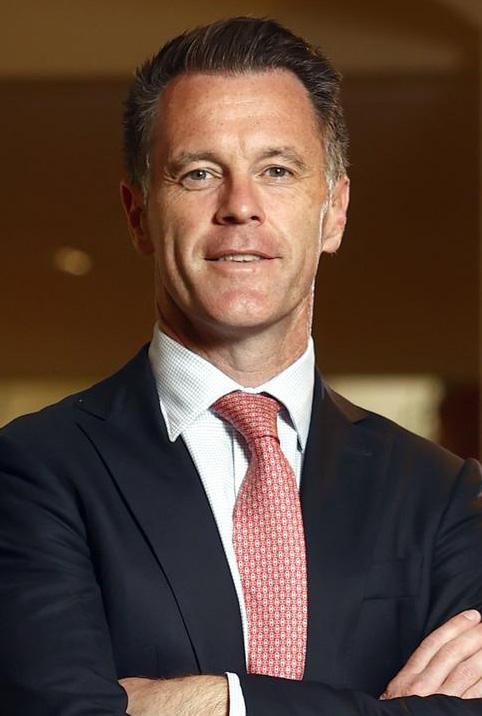
interventions, such as small-group tutoring for students who need additional support.
• Mental health and wellbeing programs, including increased access to mental health professionals.
• Professional development for teachers, focusing on evidence-based teaching methods.
• Strategies to attract and retain teachers to ensure quality education across the state. In addition to these state-level reforms,
the agreement aligns with national education targets, including:
• Improving NAPLAN profciency in reading and numeracy.
• Enhancing outcomes for priority equity cohorts.
• Increasing student attendance rates.
• Boosting engagement in initial teacher education programs.
• Raising the proportion of students achieving a Year 12 certifcate.
A Nation-Wide Commitment
This agreement follows similar commitments made with Western Australia, the Northern Territory, Tasmania, the ACT, South Australia, and Victoria. Negotiations are ongoing with Queensland.
Leadership Statements
Prime Minister Anthony Albanese:
“Building Australia’s future means investing in the next generation. Every dollar of this funding will go towards helping children learn
and opening doors of opportunity for every student in Australia. This is real reform backed by real funding.”
NSW Premier Chris Minns:
“Public education is the best investment any government can make. Every child has the right to a quality, free public education. We are proud to work with the Albanese Government to ensure NSW schools receive full funding.”
“Since coming to government, we have reduced teacher vacancies by 40%, but we know there’s more to do. This investment will help lift education standards across the state.”
Federal Minister for Education Jason Clare:
“This is a historic agreement that will support more than 780,000 students in over 2,200 public schools.
This funding is tied to reforms that will help students catch up, keep up, and fnish school.”
“It’s not a blank
cheque. This money is about delivering results—ensuring every child gets a great education and the best start in life.”
NSW Minister for Education and Early Learning Prue Car:
“This agreement underpins our commitment to rebuilding public education in NSW. After years of underfunding, we are turning things around—teacher vacancies are down 40%, and class cancellations have halved.”
“This investment will help restore NSW public education to the world-class standard that students and families deserve.”
With this agreement, New South Wales is on track to ensure every public school receives the resources needed to provide high-quality education, supporting students, teachers, and communities across the state.



For over 30 years, Australian Food Super (formerly AMIST Super) has helped Casino locals to get the most out of their super.
Our solid investment returns combined with some of the lowest fees around means more of your super is working for you.

What’s more, Australian Food Super offers a host of other benefts designed with members in mind. Competitive insurance products, online access, a mobile phone app, as well as specialist advice to help keep your retirement savings on track.
And we’re also very proud to be a Major Partner of Casino Beef Week 2025 and the Super Saturday Street Festival.
So if you’re not with Australian Food Super, why don’t you take a look at how we can help you?
Call your Client Services Manager, Justine Hayes, on 0409 907 408 or visit www.ausfoodsuper.com.au Low fees. Solid

ROBERT HEYWARD
Women play an essential role in Australia’s agricultural sector, contributing signifcantly both on and off the farm. According to a 2020 ANZ Banking report, women comprise 34% of the agricultural workforce, generating one-third of on-farm income and a remarkable 84% of off-farm income. Despite their vital contributions, networking and industry support groups for women remain a relatively recent development.
Women in agriculture often take on key business decisionmaking roles, manage fnances, mediate family succession planning, and diversify farm operations into agritourism, food production, and hospitality. However, leadership representation remains low. In Australia, only 22.3% of CEOs and 35.1% of key management positions are held by women. In agriculture specifcally, female board representation is just 3%—a fgure Marquis Macadamias is working to change.
Breaking Barriers in Agricultural Leadership Board Member Kristina Hermanson, who joined Marquis Macadamias in August 2024, brings 25 years of global leadership experience in agriculture. While she acknowledges the increasing focus on gender equity through initiatives like the

NFF Diversity in Ag Leadership Program, she believes progress in leadership representation remains slow.
“Women remain underrepresented in key decision-making roles. Closing this gap is not only a challenge but also an opportunity to attract and retain top talent.”
Kristina emphasizes that visibility is crucial in driving change.
“Seeing is believing. When women see others in leadership, they recognize that it’s possible for them too.”
She also highlights the value of diversity in agricultural growth, particularly in a rapidly expanding sector like macadamias.
“With global nut consumption still at just 2%, collaboration and innovation across the value chain will be essential. By fostering inclusivity, we strengthen businesses and ensure a thriving future for agriculture.”
Women Leading at
Marquis Macadamias
Marketing & Communications Manager Claudia Lordao
Since joining Marquis in 2021, Claudia has played a key role in shaping the company’s
women to leadership positions. This shift toward equality is meaningful, and I’m proud to be part of it.”
Operations & Logistics Manager Karen Wines Karen values Marquis’
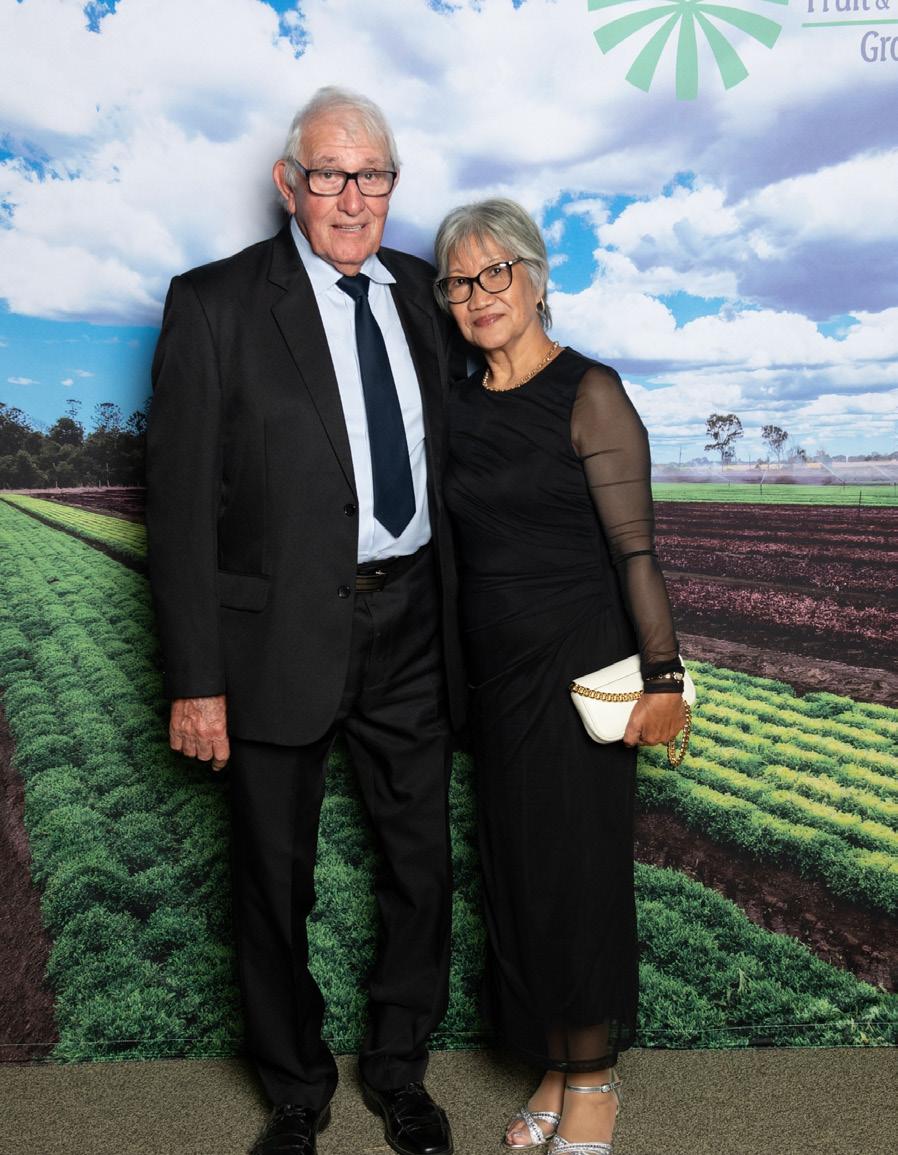
public image and promoting its leadership in the industry. She is proud to be part of a business that actively supports gender diversity.
“Marquis and the Australian macadamia industry have made great strides in promoting
culture of innovation and support for professional growth.
“The company encourages me to challenge the status quo and bring new ideas to the table. I’m proud that my work has helped streamline supply chains and improve effciencies
stability.
“Managing fnances in agriculture presents unique challenges, but at Marquis, I’ve always felt supported in making strategic decisions that shape the company’s future.”
Longtime Team
Member Tracey Bayliss
Since joining Marquis in 1999, Tracey has witnessed the company embrace female leadership.
from farm to market.”
Macadamia Grower & Marquis Shareholder Yollie Millar
Yollie and her husband unexpectedly transitioned into largescale macadamia farming in Bundaberg in 2004. She has since become an advocate for greater female representation in agriculture, employing women in her nursery and sorting shed.
“Women are a great asset to any industry. We communicate well, work hard, and should be proud of our achievements.”
“We need more women in leadership roles and on the factory foor. By creating opportunities and educating young women, we can showcase the beauty and possibilities of a life on the farm.”
Finance Manager Leah Doherty
Leah leads fnancial strategy at Marquis’ Bundaberg Factory, ensuring the company’s long-term growth and
“Even back then, women were in our Lismore offce. Today, women hold managerial roles in both offce and production areas. Marquis values capability over gender, fostering a supportive and organized workplace.”
Driving Change for Women in Agriculture While progress has been made, challenges persist. Women make up only 13.2% of the agricultural workforce, and despite advances— such as women holding 39.8% of board positions in ASX100 companies— female representation in agriculture remains critically low.
Marquis Macadamias is committed to championing gender diversity by supporting women at all levels, from farms to leadership roles.
The company believes that empowering women drives business success and strengthens the entire industry. By fostering inclusivity, Marquis is helping shape a more equitable and prosperous future for agriculture.
Council continues to monitor conditions across Ballina Shire, prioritising repairs and ensuring public safety as recovery efforts progress. From Monday, 10 March, most Council facilities have reopened, with some exceptions pending further assessments and repairs.
Council Facilities
The following Council facilities and services have returned to normal operating hours:
• Ballina Shire Council Resource Recovery Centre
• Ballina Shire Council Customer Service Centre
• Alstonville Aquatic Centre & Ballina Memorial Swimming Pool
• Ballina Indoor Sports Centre
• Lennox Head Cultural Centre
• Visitor Information Centre
The Northern Rivers Community Gallery will reopen on Wednesday, 12 March.
Please note: All Ballina Area Libraries
(Alstonville, Ballina, and Lennox Head) will remain closed on Monday, 10 March.
The Ballina Byron Gateway Airport is open, but passengers should allow extra travel time and check with airlines for fight status and booking management.
Waste Disposal and Bin Collection Update
The Ballina Resource Recovery Centre is open daily from 8 AM to 4 PM. Council has implemented free storm waste drop-off and supplementary bin collection services for residents impacted by Tropical Cyclone Alfred. More details can be found on the Council’s website.
Road and Ferry Update
Although the severe weather has passed, some roads remain fooded or hazardous. Council crews are actively inspecting and clearing roads where safe to do so.
• Ross Lane remains closed to ensure public safety. Once water
levels recede, crews will inspect and assess the road before reopening.
• Burns Point Ferry remains closed until further notice. Motorists should use the Pacifc Highway and River Drive, Wardell as an alternate route.
For real-time road updates, visit Live Traffc NSW and remember: never drive through foodwater.
Public Safety Message Although conditions are improving, hazards remain. Residents should exercise caution as fallen branches, unstable trees, and damaged infrastructure may still pose risks.
• Take extra care in parks, bushland, and tree-lined streets.
• Avoid eroded dunes and unstable beach access points.
• Limit non-essential travel to impacted areas to allow emergency crews and Council teams to continue recovery efforts.
Health and Mental Health Support
Support services are available for those in need:
• Mental Health Line –1800 011 511 (24/7)
• Healthdirect (Free health advice) – 1800 022 222
• Translating & Interpreting Service –131 450
• Lifeline (Crisis Support) – 13 11 14
• Kids Helpline – 1800 55 1800
• Beyond Blue (Non-crisis support) –1300 22 46 36
Additional online support is available through Beyond Blue, Lifeline, Headspace, Kids Helpline, and ReachOut.
Recovery Support and Assistance Points
Beginning Tuesday, 11 March, the NSW Reconstruction Authority and partner agencies will conduct community outreach (weather permitting) to assess community needs and provide recovery assistance.
A Recovery Assistance Point will be open at
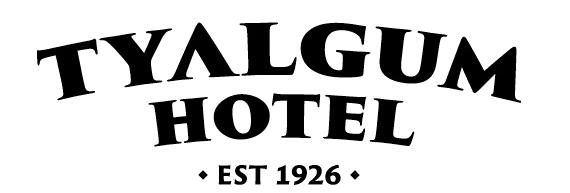
Ballina Surf Club (65 Lighthouse Parade, East Ballina) from Thursday, 13 March to Sunday, 16 March, operating daily from 9 AM to 5 PM.
For the latest recovery updates, visit the NSW Government Cyclone Alfred Recovery Webpage.
Donations
Those wishing to support recovery efforts should visit GIVIT.org.au to see exactly what is needed.
GIVIT, engaged by the NSW Government, coordinates essential goods and services donations for disasteraffected communities.
Please do not send or drop off unrequested donations, as this can overwhelm recovery operations and delay essential support.
Practical Support – Who to Call?
• Tree blocking a local road – Call Council at 1300 864 444 (After hours: 02 6626 6954)
• Tree impacting power lines – Call Essential Energy at 132 080
• Tree blocking property access, roof damage, or fooding concerns – Call SES at 132 500
• For immediate danger – Call 000 Stay Informed
• Visit the Ballina Emergency Dashboard for up-to-date information.
• Listen to ABC North Coast (94.5 FM) for emergency broadcasts.
• Follow NSW SES Ballina and Northern Rivers NSW SES on Facebook.
• For road updates, visit Live Traffc NSW.
• Download the Hazards Near Me app for real-time alerts.
Council appreciates the community’s patience and cooperation as we continue restoring services, clearing hazards, and ensuring public safety. Residents are encouraged to stay informed, follow safety advice, and seek assistance when needed.




ROBERT HEYWARD
Marine Rescue NSW has strengthened its food rescue capabilities with 12 female volunteers completing the inaugural Women in Flood Rescue course. Held in preparation for International Women’s Day (March 8), this intensive training enhances the State Operations Group (SOG), which now includes nearly 130 endorsed food rescue and support feld operators.
This initiative was developed in response to the 2022 NSW Flood Inquiry recommendations, reinforcing Marine Rescue NSW’s role in supporting the NSW Government’s emergency response. Volunteers from 10 Marine Rescue NSW units (Point Danger, Brunswick, Nambucca, Tuggerah Lakes, Broken Bay, Port Jackson, Botany Port Hacking, Narooma, Bermagui, and Merimbula) participated in the program.
Comprehensive Training for Real-World Flood Scenarios
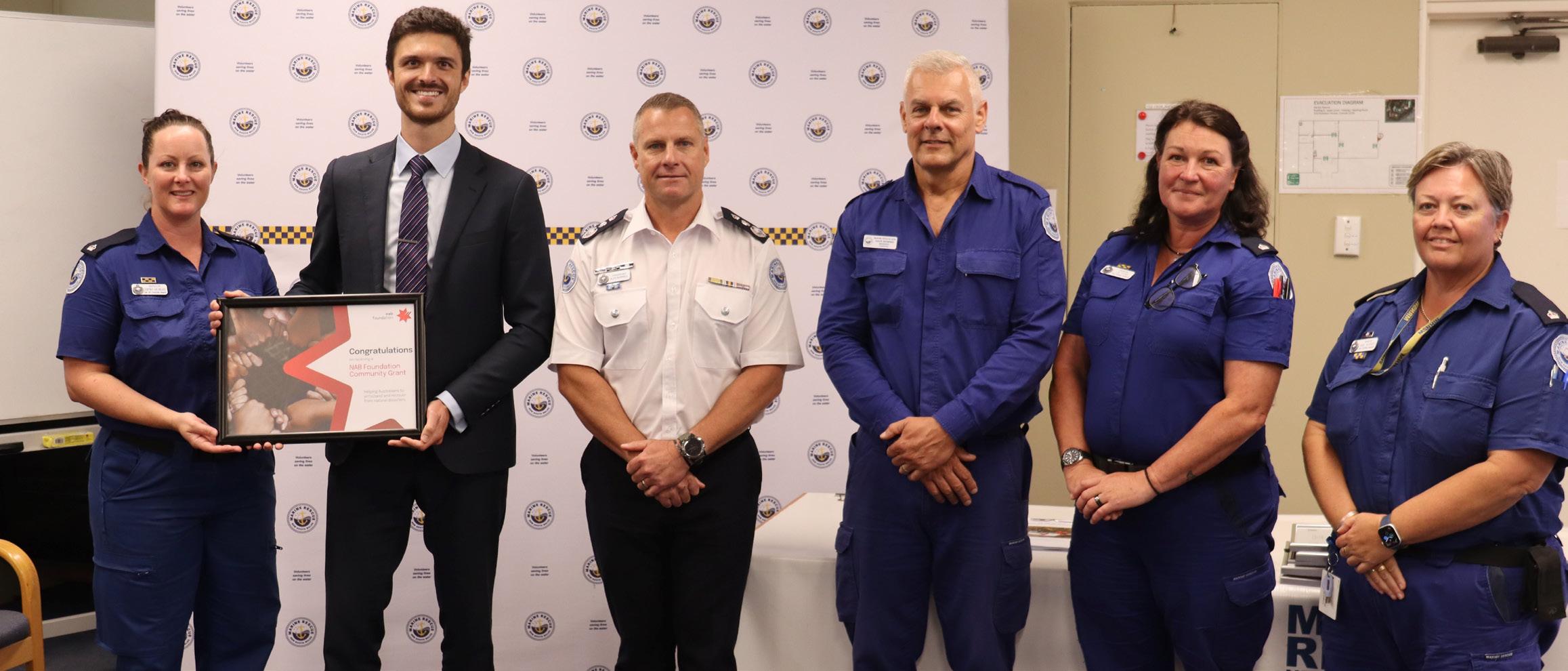
The three-day course, held at Marine Rescue NSW State Headquarters in Cronulla and Penrith Whitewater Stadium, combined practical on-water and off-water training, leadership seminars, and rigorous assessment.
times of crisis.”
The program was made possible through a $25,000 NAB
Marine Rescue NSW Commissioner Alex Barrell emphasized the importance of this specialized training.
“These women are now equipped with essential food rescue skills and can be deployed across NSW with specialist vessels and equipment to support their communities when needed.”
“Marine Rescue NSW is committed to developing all volunteers, and this training ensures local communities beneft from their expertise in


Foundation Community Grant, with NAB Private Client Director David Novakovic expressing admiration for the participants.
“To achieve so much in three days is remarkable. This course not only enhances food response capabilities but also empowers women to take on leadership roles in emergency services.”
Challenging Yet Rewarding Training Experience
Participants underwent rigorous prerequisite training covering electrical safety, food rescue awareness, and ftness assessments before completing:
• Self-rescue and land-based food rescue at Penrith Whitewater Stadium
• Multi-purpose vessel and IRB (infatable rescue boat) inductions
• Deployment taskings and equipment familiarisation
Marine Rescue
NSW Capability
Manager Dave Bowing highlighted the realistic deployment challenges that volunteers may face.
“SOG members could be deployed to unfamiliar locations, operating new equipment under extreme conditions. This course prepares them for those high-pressure situations.”
Of the participants, 10 successfully passed,
demonstrating their readiness for real-world emergency response. The average participant age was 49.3, showcasing the diverse backgrounds and experiences they bring to the team.
First-Hand Insights from Volunteers
• Saffron BrunSmits (Marine Rescue Brunswick):
• “This training opened my eyes to how water behaves in a food. I now feel much better equipped to respond if needed.”
Liz Ellis (Marine Rescue Nambucca):
“It was a great refresher—handling different vessels and working in unfamiliar waters was valuable experience for real-life deployments.”
�Sue Hall (Marine Rescue Narooma):
“It was gruelling but invaluable. We learned how to rescue ourselves and others in foodwaters. I’m proud to be part of such an amazing team.”
Strengthening Marine Rescue NSW’s Flood Response Marine Rescue NSW continues to enhance its food rescue and support capabilities, ensuring volunteers are welltrained to respond when disasters strike.
As a volunteerbased, not-for-proft organization, Marine Rescue NSW remains dedicated to boater safety and community support, playing a crucial role in emergency management across the state.



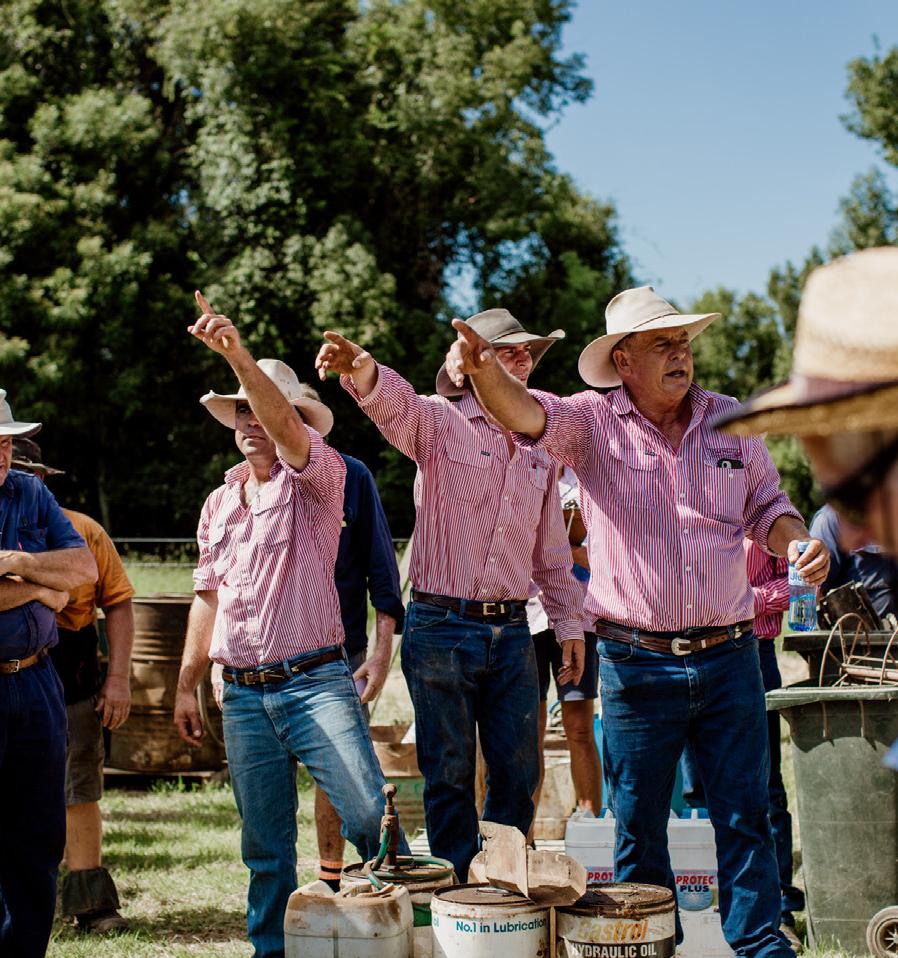
22ND MARCH | 10AM





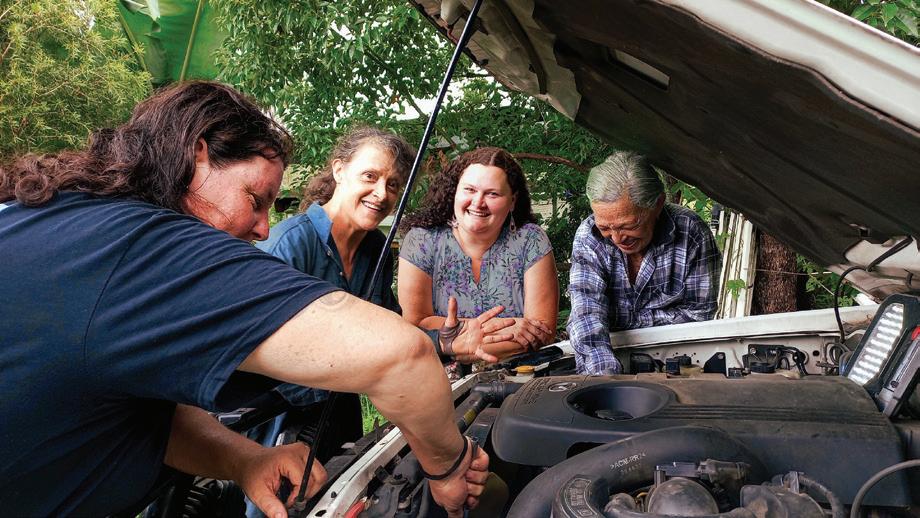





JEFF GIBBS


Title: Stone Yard Devotional
Author: Charlotte Wood
Price: $26.95
Distributor: Booktopia
By Samantha Elley
Her marriage is breaking up, so our heroine decides to return to her hometown and spend a few days at the nearby convent in retreat.
The only problem is, she is an atheist. What could go wrong, or right?
She fnds herself staying on in this little reclusive community, situated on the stark Monaro plains in New South Wales and taking on the daily rhythm of a religious life.
She still doesn’t know how to pray and tends to just hope and think while the nuns do their stuff.
Life isn’t boring and our unnamed main character has to learn to deal with a mouse plague, the return of the remains of one of the
Five of NSW’s most exceptional women have been recognised as recipients of the NSW Women of the Year Awards 2025 at the International Convention Centre in Sydney.
The NSW Women of the Year Awards serve as the centrepiece of NSW Women’s Week, which runs from Sunday, 2 March, concluding on International Women’s Day, Saturday, 8 March. 2025 NSW Women of the Year Award Recipients
• Dr Jessica Luyue Teoh (Hornsby) – NSW Young Woman of the Year
o Domestic violence advocate and 2023 Churchill Fellow, one of only two women under 30 in Australia to receive the honour.
• Sandy Rogers (Tweed) – NSW Community Hero
sisters who had gone missing in Thailand, while setting up a refuge for deprived woman, and fnally, the visit of one of the sisters who turns out to be a woman she bullied in high school.
Lessons on forgiveness, grace, grief and how to kill a multitude of mice, expand her experiences.
Stone Yard Devotional was shortlisted for the 2024 Booker Prize, 2024 Victorian Premier’s Literary Award, 2025 The Age Book of the Year, 2024 Barbara Jefferis Award and the Prime Minister’s Literary Award for Fiction. It was also long listed for The Dublin Literary Award 2025. Charlotte Wood has written seven novels and three books of nonfction.
She was born in Cooma and has a PhD from the University of NSW with a Master of Creative Arts.
She currently lives in Sydney.
You can order your copy from www.booktopia. com.au

Hills Shire)
• Aurora Iler (Campbelltown)
• Chloe Croker (Goulburn Mulwaree)
• Emilia Trustum (Richmond Valley)
• Hayley Paterson (Hornsby)
• Jiayi Fang (Ku-ringgai)
• Kat Mulcair (Yass Valley)
o Has dedicated 40 years to improving the lives of children with intellectual and physical disabilities and their families.
• Dr Vanessa Pirotta (Canada Bay) –Premier’s NSW Woman of Excellence
o Wildlife scientist renowned for her impact on marine conservation and science communication.
• Kirsty Evans (Orange) – NSW Regional Woman of the Year
o Led efforts to provide pro bono legal advice to the Molong community following severe fooding in 2022.
• Marjorie Anderson (Georges River) – NSW Aboriginal Woman of the Year
o A dedicated leader pivotal to the success of 13YARN, Australia’s frst national crisis support service for Aboriginal & Torres Strait Islander people. The Ones to Watch (Girls Aged 7-15 Years)
• Aish Khurram (The Hills Shire)
• Ashleen Khela (The
• Lydia Tofaeono (Strathfeld)
• Waniya Syed (Camden)
Special In Memoriam –Maddy Suy
This year’s ceremony included a special In Memoriam for Maddy Suy, a vibrant girl whose love for life and advocacy work continues to inspire. Diagnosed with a brain tumour at age six, Maddy faced the challenge with bravery and positivity. She aimed to leave a legacy and encouraged others to contribute through Maddy & Co.
Local Woman of the Year Recipients
Recipients nominated by their local MPs attended the ceremony and were honoured for their exemplary service to their communities. Their names will be featured in the Local Woman Honour Roll on the NSW Women of the Year Awards webpage.
Since its inception in 2012, the NSW Women of the Year Awards have recognised revolutionary thinkers, everyday heroes, social advocates,
Teoh:
“To stand alongside such a diverse and passionate group of women, each making impactful contributions to their communities and felds, is truly inspiring.
“This recognition highlights the collective strength of women driving change, and I am grateful to be part of this incredible journey.”
NSW Community Hero 2025 – Sandy Rogers:
and innovative role models across the state.
A livestream recording and further details about the NSW Women of the Year Awards program can be accessed https:// www.nsw.gov.au/
Statements from Leaders and Award Recipients
Premier Chris Minns:
“I’m delighted to congratulate NSW’s most remarkable women and girls for breaking barriers and achieving success in their respective felds.
“You are the future of NSW, inspiring people across the state with your dedication, passion, and lasting impact.”
Minister for Women
Jodie Harrison:
“Congratulations to the recipients of the NSW Women of the Year Awards. You are truly deserving of this recognition.
“You can’t be what you can’t see, and you are paving the way for women and girls with your strength, resilience, and achievements.
“The program also recognises women at the heart of communities, through the Local Women of the Year awards.
“I look forward to following the journeys of our incredible young recipients—you are already making a difference, and I’m sure your futures are bright.”
NSW Young Woman of the Year 2025 – Jessica
“I have been fortunate to help many in our community. Supporting those needing a little help when times are tough means a lot to me, and I know it makes a difference.”
Premier’s NSW Woman of Excellence 2025 – Dr Vanessa Pirotta:
“This recognition is incredibly powerful for me as a scientist and a mother.
“So much of my work is communitybased, helping future generations understand our marine environment. This recognition will encourage communities across NSW to connect with the sea, whether they live in Bondi, Forbes, or Murrumbateman.”
NSW Regional Woman of the Year 2025 – Kirsty Evans:
“It’s a privilege to be acknowledged among such inspiring women. This recognition is not just a personal milestone but a refection of the incredible support from my community, colleagues, and family.”
NSW Aboriginal Woman of the Year 2025 – Marjorie Anderson:
“I am passionate about creating healthy, sustainable, and safe Aboriginal communities.
“This award refects my important work in the community and my role in delivering the world’s frst national crisis line for Indigenous people.
“Women need to be recognised and supported for their outstanding contributions so they can continue to achieve greatness.”
Residents of the Lismore City Council area can dispose of food waste for free at the Recycling & Recovery Centre on Wyrallah Road, East Lismore, which will reopen tomorrow.
Free Flood Waste Drop-Off
• The free disposal service is available until Close of Business on Sunday, 23 March.
• Council will reassess demand and update the community if an extension is required.
Lismore City Mayor Steve Krieg announced the initiative following damage caused by Tropical Cyclone Alfred.
“We really dodged a
bullet with this one, but there is a lot of damage, including downed trees,” Mayor Krieg said.
“Our residents shouldn’t have to bear the cost of this weather event. Council will provide free drop-off for waste generated as a consequence of the impacts of Tropical Cyclone Alfred, including general waste from food-affected properties and green waste from storm damage.”
Waste Disposal Guidelines
• Green waste must be separated from general waste.
• Any load containing
asbestos that is not properly double-wrapped and sealed in plastic will be rejected.
• Expect longer wait times at the facility due to high demand. The Council appreciates the community’s patience as operations resume.
Kerbside Bin Collection Kerbside collection, which was temporarily paused due to the cyclone, has resumed on Monday, 10 March 2025, including business waste collections.
Residents whose bins were missed during this period should leave all bins out for collection on Wednesday 5, Thursday 6, and Friday 7 March.
Facility Reopenings
• Return and Earn: Open from 10 AM to 3 PM.
• Lismore Revolve Shop: Reopened Wednesday, 19 March (9 AM to 2 PM). The extended closure allows staff to complete inspections of the higher volumes of green waste.
• Lismore Rainforest Botanic Gardens: Closed until further notice.
• Nimbin Transfer Station: Reopened Tuesday, 11 March (8 AM to 3 PM).
Lismore City Council will continue to provide updates as recovery efforts progress.
ROBERT HEYWARD
Experts from the Triple P – Positive Parenting Program are urging families to prioritize emotional resilience as part of their disaster preparedness and recovery efforts.
Dr. Vanessa Cobham, co-author of Fear-Less Triple P Online and Professor at The University of Queensland’s School of Psychology, is available to provide expert commentary on:
• Supporting family mental health and wellbeing before, during, and after a natural disaster.
• Developing an ‘emotional resilience plan’ as part of emergency preparedness.
• Recognizing the difference between normal stress and more serious mental health concerns following a disaster.
• Accessing parenting support to help children experiencing anxiety.
Understanding the Emotional Impact on Families
According to Dr. Cobham:
“The disruption caused by natural disasters can have a signifcant impact on both children and parents’ mental health. Research shows that approximately 5 to 15 percent of children in Australia experience

serious mental health symptoms after disaster exposure.”
“Parents, carers, and children often experience a wide range of emotions, including grief, anger, fear, sadness, and anxiety—these reactions are completely normal.”
“Fortunately, there is growing awareness of how natural disasters affect young people, and considerable effort is being made to support disasteraffected communities on their journey toward recovery.”
“Parents and carers can use their existing parenting skills to help children build emotional resilience and feel supported during challenging times.”
Triple P’s Tips for Building an Emotional Resilience Plan
Have open and honest conversations – Talk with children about potential situations and how to prepare.
This encourages calm and realistic thinking rather than fear-based responses. Involving
kids in small preparation tasks can also help them feel more in control.
• Model calm behaviour –Children absorb the emotions of those around them. Demonstrate healthy ways to manage stress, such as deep breathing or relaxation techniques, to help them feel secure.
Reassure them that it’s normal to feel anxious and that you’re navigating this together.
• Pause and listen
– When children express concerns, take the time to listen actively. Encouraging them to acknowledge and process their emotions can strengthen emotional resilience.
• Tap into your support network
– Maintain a list of family, friends, and emergency contacts who can provide emotional support. Helpful resources include
“Leemo has views on just about anything”

‘MUM, there’s an ARK FLOATING BY’
Kids Helpline (1800 551 800) and Lifeline (13 11 14) for those feeling overwhelmed.
• Use your ‘parenting toolbox’ – Refect on strategies that have worked before to guide your family through stressful times. Access support programs or online resources to reinforce positive parenting approaches when needed.
Access Free Parenting Support
The Triple P – Positive Parenting Program is supported by the Australian Government Department of Health and Aged Care under the Parenting Education and Support Program.
Parents and carers can access free, 24/7 online parenting resources at: triplep-parenting.net.au. By equipping families with tools for emotional resilience, parents and carers can help children feel more secure, supported, and prepared during and after this challenging event.
I gured, for my peace of mind, to question ‘Mum Jane’ (it’s Leemo cat here!) ‘Mum, when will the rain stop? Can I go outside? When is my next treat? Can I watch ‘Bluey?’ Our yard has tree mess all over it? WHAT is going on?’ Mum had a bit of a ponder, staring at me with indecision. My astute mind told me she is deciding whether to tell me to shut-up & not ask dumb questions, or to answer them? ‘Leems my boy, I know that what is going on is unsettling you; is this correct?’ I humphed loudly & told her I have indeed found the past days crappy. (Ni y, I got a loving hug!) ‘OK my boy, let me clarify some stu for you, OK? ‘Well, rstly, like most people (‘cept God) I don’t know when the rain might stop ‘cos our town has had the double threat of both a potential ood & a Cyclone. You CAN’T go outside ‘cos you’ll get wet & catch a nasty cold. Your treat will be on time; you can watch ‘Bluey’ at 3pm & yep Leems, our yard looks like it’s been attacked by a most crabby hungry pack of dinosaurs & elephants. Elephants are welcome; they are Vegan & would clean up the foliage in our yard easy peasey ‘cos they like leaves & branches & stu so they can eat as much as they want. BUT, Leems, Dinos have exible diets; ‘Sauropods’ eat lizards and cycads; Hmm? not sure about them Leems ‘cos I like
lizards? BUT there are also ‘Carnivore’ Dinos who eat meat; which puts you & me on their Menu! (Crikey, Mum talks so much crappola!) ONE of them is the Velociraptor that has evil sharp fangs & and powerful jaws; whilst you may climb a Jacaranda to escape Leems THEY WILL FIND & EAT YOU!’ I made her tea with a Bex powder. ‘Mum, there ARE no Dinosaurs anymore ‘cos they all became extinct 65 million years ago a er being hit by an asteroid. So there!’ ‘HAH, Leems, it must have been a bloody big asteroid. ‘I’ reckon Noah was to blame for Dinosaurs ‘extincting’ as there was a HUGE ood; Noah, was a bit of a handyman & built a HUGE Ark & invited many animals on board. Some of the ‘Carnivore’ Dinos would have hopped on the Ark & probly ate most of the other animals & then ran out of stu to eat & then became extinct. ere was also a postood ice age and other stu . So there Smarty Puss. AND, might I also suggest to you Leems that if, by some miracle a boat called ‘NoArk’ sails by our house with a bearded bloke & two Dinosaurs waving to you to join them just wave back & come inside.
If you DO take up the invite to go cruising just ensure you send me a postcard before you become extinct; this is quite probable at the rate you’re going. Comprende?’ Hmmm?
‘Mum I do reckon it’s time for us to call this pointless & idiotic discussion to an end. Do you agree?’ Whohoo, she agreed & suggested we play Monopoly instead as it reminded her of the monotonous weather; she said I could win?! We hope you are all dry & safe. Hugs from Leemo & ‘Mum Jane’.

“A great writer,” once said the Russian Nobel Prize-winning Joseph Brodsky, “is one who elongates the perspective of human sensibility, who shows people at the end of their wits an opening, a pattern to follow.” Which perfectly unfurls the Bulgarian writer and PhD qualifed chemist, Elias Canetti. “Patterns” being the secret key, and calling that underpin the interests of those who are deeply fascinated by structures and substances – at their most complex and refned.
Born in 1905 in a city on the Danube River, Elias Canetti would go on to live in fve different countries, and subsequently learn fve different languages. The diversity of thought, and means to express himself as a creative person is unfathomable to those of us who blunder through our days using, and only knowing, the one language that we’ve been culturally marinated in since birth.
The acclaimed American writer and critic, Susan Sontag once said of Canetti, “Rarely has anyone been so at home in the mind, with so little ambivalence. Far from being a source of complacency, this attitude is Canetti’s great strength. He is someone who has felt in a profound way the responsibility of words.”
A responsibility, not to mention a clarity with their delivery, that informed and guided him every step of the way. At his fnest, Canetti does with words and their under-swirling emotive triggers, what no more than 50 writers in all of history have been able to do. He connects his words and thoughts in such a way that they move back and forth between themselves, never restricting the other
through the limited ‘specifcs’ of what is superfcially meant. As he was to say, in such a manner, “We forget nothing, and we forget it less and less…We can talk only about the same things, over and over. Fine, if they’re not too few.”
There is a selfessness to the greatest writers that so completely and utterly transcend the self-absorbed wishes, wants and ambitions of the second rate. Effortlessly the greats leave themselves behind, and unite, albeit collectivise the thinking and yearnings of their audience; they not only speak on behalf of others, they mould and make them see and believe in the promise and potential of humanity, when it opens itself to the hope of far greater things.
Talking in the third person, as Canetti was often prone to do in his prolifcally kept notebooks, which comprised of mostly aphorisms and thoughts caught on the fy, he once said in his aptly titled The Secret Heart of the Clock, “What if all that counts is the tenderness one evokes in those who come later? Remembered breath and unconfused words?... He no longer wants thoughts that bite. He wants thoughts that make it easier to breathe.”
And as if he were on standby his whole life to administer CPR to humanity in a century that raised so many existential threats; Canetti died in 1994, but still managed to prophetically ascertain, “The gaps in our knowledge keep roaming…God made a mistake in his calculations at the Tower of Babel: nowadays everybody speaks the same technology.”
The NSW Government has partnered with Aboriginal women to launch a multi-media campaign aimed at increasing breast screening rates. The campaign encourages Aboriginal women aged 40 and over to have a breast screen every two years, the most effective method for detecting breast cancer in its earliest stages.
Developed by BreastScreen NSW in collaboration with an Aboriginal creative agency, the second phase of the ‘Stay Healthy for You and Your Mob’ campaign features Aboriginal women with breast cancer in a TV advertisement for the frst time. The campaign includes a powerful story from Gomeroi woman Jacqui Nean Kahn, who shares how a routine breast screen saved her life.
Campaign Reach and Community Engagement
In addition to television, the campaign is running across multiple platforms, including:
• Radio
• Print media
• Screens in Aboriginal health services
An Aboriginal advisory panel was involved in shaping the campaign to ensure its message resonates with the community.
Impact of Screening Initiatives
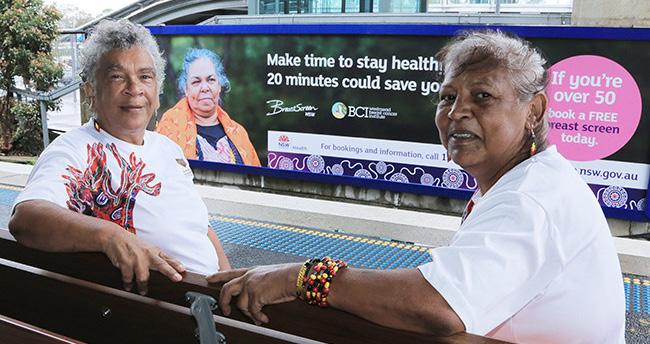
• Almost 45% of Aboriginal women in NSW aged 50-74 are up to date with their breast screen.
• Since the launch of Cancer Institute NSW’s Putuwa project in 2023, screening rates among Aboriginal women aged 40-49 have more than doubled (from 7.8% to 18.7%).
• The Putuwa project is an Australian-frst initiative that lowered the recommended screening age for Aboriginal women from 50 to 40 to enhance cultural safety and accessibility of BreastScreen NSW services.
BreastScreen NSW Recommendations
• Aboriginal and Torres Strait Islander women should have a mammogram every two years from age 40.
• Anyone with breast symptoms should contact their GP or health worker immediately.
• Women with a family history of breast cancer should discuss screening needs with their GP.
Accessing Breast Screening Services
• BreastScreen NSW is a free service.
• Screening is performed by female staff.
• The procedure takes less than 20 minutes.
• No doctor’s referral is required.
To book a breast screen, call 13 20 50 or book online at breastscreen. nsw.gov.au.
The ‘Stay Healthy for You and Your Mob’ campaign can be viewed here: Watch the Campaign.
Statements from Key Leaders Minister for Aboriginal Affairs and Treaty & Minister for Medical Research, David Harris:
“The development of the Stay Healthy for You and Your Mob campaign was guided by feedback from Aboriginal women, and I thank them for working with us to spread the message that screening saves lives.
“Breast cancer is the most common cancer among Aboriginal women in NSW, but the good news is that early detection signifcantly improves treatment outcomes.
“It’s great to see more Aboriginal women participating in screening, but we must continue to improve rates. We
remain committed to working with Aboriginal communities to reduce the impact of breast cancer and close the health gap.”
NSW Chief Cancer Offcer & CEO of Cancer Institute NSW, Professor Tracey O’Brien AM:
“For varied and complex reasons, Aboriginal and Torres Strait Islander women are, on average, diagnosed four years younger, have more advanced cancer at diagnosis, and are underrepresented in routine screening.
“It was critical that we partnered with Aboriginal women to develop a campaign that resonates with the community and encourages screening— not just for themselves, but for their families.
“We are grateful to the many women who helped bring this campaign to life and encourage all Aboriginal and Torres Strait Islander women to screen regularly because early detection truly saves lives.”

Kyogle Mayor Cr Danielle Mulholland has expressed her gratitude to Council staff, the community, and emergency responders for their dedication and hard work in managing the impacts of Cyclone Alfred.
Although fooding in most areas is easing, Cr Mulholland urged residents to remain vigilant as heavy localized rain is still forecast for today.
“We are hopeful that the worst of the fooding has passed, but with more rain forecast, people should remain alert and keep informed of food warnings,” she said.
“And while it should go without saying, I’ll repeat again that if a road or bridge is fooded, then you should not under any circumstances drive into foodwaters. If it’s fooded, forget it!”
Council’s Emergency Response
Cr Mulholland commended Council staff for their tireless efforts throughout the weekend, ensuring road and bridge safety.
“Once the situation eased, staff were out and about working to ensure people had access—clearing fallen trees, removing debris from roads and bridges, and where possible, ensuring
bridge approaches were safe,” she said.
“I could not be prouder of the work Council staff have done.
“That work will continue in the coming days and weeks, and I ask for your patience as staff work through the many issues created by this food event.”
Cr Mulholland reassured the community that Council is working to reopen its facilities, roads, and bridges as soon as possible.
Residents are encouraged to stay updated via the Council’s Facebook page and website.
Community and First Responder Acknowledgment
Cr Mulholland also praised the community for their preparedness and cooperation in following safety advice.
“I would also like to acknowledge the SES, the Rural Fire Service, the ADF (Australian Defence Force), and community volunteers for their efforts in keeping our communities safe as the cyclone passed and fooding occurred,” she said.
“They do incredible work, often in dangerous and trying conditions, and I know the community is behind me when I say thank you very much.”
A 29-year-old man has been charged with four counts of murder and assault with intent to rob armed with an offensive weapon, following an extensive investigation into a fatal crash in Wardell on the state’s north coast early last year.
The tragic incident occurred on Saturday, 24 February 2024, when emergency services responded to a report of a vehicle crash on Back Channel Road, Wardell, at approximately 5:45 am.
Upon arrival, offcers from the Richmond Police District discovered a Mazda BT50 utility that had veered off the road and collided with a tree. Sadly, all four occupants of the vehicle died at the scene. The victims were
later identifed as:
• Mark Dodds (36) – driver
• Sophie-Lee Fullagar (24)
• Benjamin Watego (50)
• James Doherty (42)
Extensive Investigation Leads to Arrest
A major investigation was launched under Strike Force Land, comprising detectives from the Richmond Police District, Crash Investigation Unit, and the State Crime Command’s Homicide Squad.
After a year-long inquiry, including public appeals for information, police arrested the suspect at Coffs Harbour Police Station on Tuesday, 4 March 2025.
The man has since
been charged with: Four counts of murder Assault with intent to rob armed with an offensive weapon causing wounding/ grievous bodily harm Allegations and Court Proceedings
Police allege that the accused met with the four victims in South Ballina, where he attempted to rob them.
When the group fed in their Mazda BT50, the man allegedly pursued them in a Toyota Corolla.
Further allegations suggest that his driving behavior and actions led to the Mazda BT50 losing control and crashing into a tree, resulting in the deaths of all four occupants.
The accused was refused bail upon his initial court appearance

Scan the QR Code to message Jase
at Coffs Harbour Local Court on Tuesday, 4 March 2025. He remains in custody and is scheduled to appear before Lismore Local Court on Wednesday, 14 May 2025.
Ongoing Investigation
The Strike Force Land investigation is ongoing, with police continuing to examine all circumstances surrounding the incident. Authorities urge anyone with further information to come forward.
This case marks a signifcant development in a high-profle investigation, highlighting the commitment of law enforcement to ensuring justice for the victims and their families.


Formula 1 simulation engineer.
Melbourne-based AI-driven behavioural insights platform, Flowing Bee, has successfully raised $1.6 million in a pre-seed funding round led by Archangel Ventures.
The round also saw participation from The University of Melbourne Genesis Pre-Seed Fund, Antler, LaunchVic’s Alice Anderson Fund, and M8 Ventures.
The funds will be used to enhance the platform’s AI-powered behavioural insights engine, advance its automated campaigncreation capabilities, and expand its engineering, data science, and go-tomarket teams.
Bridging the Gap Between Behavioural Science and AI
Flowing Bee integrates behavioural science with artifcial intelligence to provide deep audience insights and automated campaign creation at scale. The company was co-founded in 2023 by Michael Sankey, a behavioural scientist, and Sara Khorasani, a former
Already in use by ASX-listed brands across multiple industries, Flowing Bee aims to revolutionise how marketing teams extract consumer insights and create data-driven campaigns—eliminating traditional manual research bottlenecks.
“Brands waste billions on ineffective campaigns because they fail to activate the true psychological drivers of consumer behaviour,” said CEO Michael Sankey.
“Our platform combines proven behavioural science and AI to bridge this gap— delivering deep audience insights and automated campaign creation at scale.”
Investor Confdence in Flowing Bee’s Innovation
The funding round attracted backing from investors who see Flowing Bee’s combination of behavioural psychology and AI as a gamechanger in enterprise

marketing.
Andrew Cicutto, Principal at Archangel Ventures:
“In a world where ad content and placement are increasingly commoditised by algorithms, we love solutions that solve more complex problems within enterprise. Flowing Bee empowers brands to move at the speed of culture.”
Hun Gan, CEO at University of Melbourne Genesis Pre-Seed Fund:
“Investing in Flowing Bee represents our commitment to nurturing the next wave of AI innovation emerging from our university
ecosystem.”
Dr. Kate Cornick, CEO at LaunchVic:
“Enterprise software is one of Victoria’s largest subsectors, and Flowing Bee is a great example of a homegrown startup set to take on global martech leaders.”
James McClure, Partner at Antler Australia:
“Michael and Sara bring a formidable mix of behavioural science, deep domain expertise, and commercial drive— exactly what’s needed to crack this otherwise saturated market.”
Emily Rich, Partner at M8 Ventures: “Flowing Bee represents a fundamental
shift in how brands understand and connect with their audiences. Their combination of behavioural science and AI delivers insights that most marketers never access, creating campaigns that truly resonate with customers.”
Driving Measurable Marketing Impact
Flowing Bee’s AI-driven technology allows brands to survey their target audience, extract actionable behavioural insights, and generate optimised marketing campaigns within 48 hours.
This capability has already delivered value for major brands:
Tony Clement, Global Director of Insights at Movember:
“Understanding the human motivations behind fundraising for men’s health has never been more complex.
Flowing Bee’s product has given us deeper insight into how we can be more effective—from strategy to execution.”
Tania Turnbull, Chief Product & Marketing
Offcer at Inviva:
“Flowing Bee has provided us with critical audience insights while streamlining content creation. Its behavioural science-led approach isn’t just faster—it delivers measurable results, ensuring our marketing is data-driven, not guesswork.”
Making AI-Driven Insights Accessible to SMEs
While Flowing Bee is currently focused on enterprise clients, the company aims to expand its reach to small and medium-sized businesses worldwide.
“Our goal is to remove the guesswork from marketing,” said Sankey.
“We’re starting with enterprises and will eventually make this technology accessible to SMEs worldwide.”
With this latest funding secured, Flowing Bee is positioned to scale its AI-powered consumer behaviour platform and transform marketing decision-making through science-led, automated insights.
Australia’s agriculture sector is set for another strong year, with the industry’s value projected to reach $91 billion in 2025-26—the third highest on record. When fsheries and forestry are included, the total value is expected to hit $98 billion, according to ABARES Executive Director Dr Jared Greenville.
While slightly lower than the exceptional results of 2024-25, livestock and livestock products are forecast to reach a record $40 billion, driving much of the sector’s strength.
“Demand for red meat is refected in both strong export volumes and
rising export prices, with the total value of meat exports expected to reach $22 billion this fnancial year,” Dr Greenville said.
Agricultural Exports Remain Strong
Despite some fuctuations in commodity markets, agricultural exports are forecast to remain steady at $72 billion for
2025-26. When including fsheries and forestry, the fgure is expected to increase to $77 billion.
Record-Breaking Winter Crop Production
Australia’s national winter crop production is estimated to have risen to 59.8 million tonnes in 2024–25, marking a 27% increase above the 10-year average and the



third-largest harvest on record.
• Favourable conditions in New South Wales and Queensland contributed to strong yields.
• Western Australia benefted from timely rainfall.
• Victoria and South Australia, however, faced poor seasonal conditions, leading to lower crop yields.
Meanwhile, summer crop production is predicted to decline slightly but will still remain 28% above the 10-year average, with an estimated 4.7 million tonnes produced.
Farm Incomes Set to Rise
With higher livestock prices and increased crop production, average farm fnancial performance is expected to improve:
• Broadacre farm cash income is forecast to increase by $89,000 in 2024–25, rising from
$124,000 to $213,000.
• In 2025-26, farm incomes are predicted to grow further to $262,000 per farm, supported by easing input costs and stronger commodity prices.
“While parts of South Australia and Victoria experienced below-average farm performance in 2024–25 due to dry conditions, improving climate conditions are expected to lift production and proftability next fnancial year,” Dr Greenville said.
For further details, read the full Agricultural Commodities Report March 2025 here https:// www.agriculture.gov.au/ abares/research-topics/ agricultural-outlook and the Crop Report here https://www. agriculture.gov.au/ abares/research-topics/ agricultural-outlook/ australian-crop-report

The Human Story is an immersive exhibition currently captivating audiences in Brisbane.
Originally scheduled to conclude on March 16, 2025, its run has been extended until April 20, 2025, due to popular demand.
Location and Venue
The exhibition is housed at Uptown, Level Q, 91 Queen Street, Brisbane City, QLD 4000. This central location provides easy access for both locals and visitors, with proximity to public transportation and parking facilities.
Exhibition Overview
Curated by the Spanish company Musealia, with contributions from Titanic historian ClaesGöran Wetterholm, the exhibition offers



a profound narrative experience. It features over 300 original artifacts, including photographs, handwritten letters, and personal belongings of passengers and crew. Visitors can explore meticulously recreated interiors of the ship, from opulent frstclass suites to humble third-class cabins, providing a tangible connection to the early 20th-century maritime world.
Visitor Experience
Upon entry, guests receive an audio guide available in multiple languages, narrating the events of that fateful day in 1912. The guide enhances the journey with music, sound effects, and testimonies from Titanic’s passengers and crew, making the 80 to 90-minute tour both educational and emotionally engaging.
Ticket Information
• Pricing: Tickets start at $39 AUD.
• Age Suitability: The exhibition welcomes all ages, with children under 4 granted free entry.
• Group Bookings: Special rates and packages are available
for educational groups, large parties, and corporate events.
Interested parties can reserve visits or inquire about private sessions
full of information as well as curiosities. Defnitely worth seeing.” Conclusion “Titanic: The Human Story” in Brisbane offers

through the exhibition’s offcial channels.
Visitor Feedback
Attendees have praised the exhibition for its meticulous organization and immersive storytelling. One visitor remarked, “It was like walking through a documentary, and we felt as if we really got to know some of the passengers personally by the end.” Another highlighted the depth of information, stating, “Audio is precise and
a unique opportunity to delve into the personal narratives and historical signifcance of one of history’s most renowned maritime tragedies. With its central location, comprehensive exhibits, and engaging storytelling, it stands as a must-visit attraction for history enthusiasts and casual visitors alike.
Find out more by visiting: https:// titanicexhibition.com.au/ brisbane/


Place the digits 1 to 9 in the blue squares, so that all 6 equations are correct. Multiplication and/or division are performed rst, in whichever order they appear –followed by addition and/or subtraction, in whichever order they appear.
1 “After all, tomorrow is another day!” is a quote from which classic movie?
(a) The Wizard of Oz (b) Casablanca (c) Frankenstein (d) Gone with the Wind
2 William Wilberforce was influential in the abolition of what?
(a) Slave trade (b) Death penalty (c) Second French Empire (d) White Australia Policy
3 What is the largest island in the Caribbean?
(a) Hispaniola (b) Cuba (c) Jamaica (d) Puerto Rico

4 The Forgotten People was a 1942 speech delivered by which Australian politician? (a) Alfred Deakin (b) Andrew Fisher (c) Robert Menzies (d) Billy Hughes
5 Andasibe-Mantadia National Park is a popular tourist destination in which country? (a) South Africa (b) Kenya (c) Madagascar (d) Morocco
6 To the nearest centimetre, what is the diameter of a hole on a putting green? (a) 9 cms
Which is the correct meaning for these words?
1 CONNIVE
(a) To have a private understanding
(b) To include
(c) To deliberate on
2 LOGOMACHY
(a) A contention about words
(b) A professional speech maker
(c) A covered open arcade
3 PRIDIAN
(a) First-formed (b) Pertaining to yesterday (c) Haughty
4 TECTORIAL
(a) Irksome
(b) Covering (c) Moving unsteadily
5 UMBROUS (a) Shaded (b) Causing offence
(c) Enforcing the rules
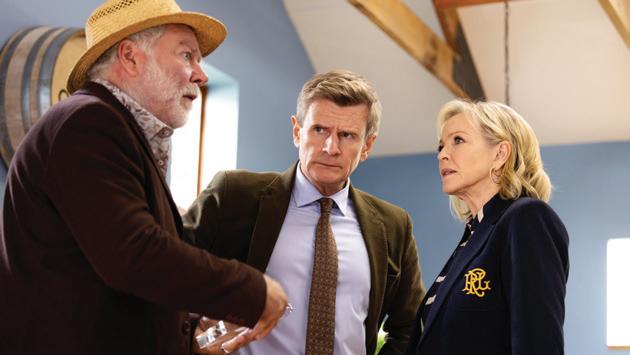
FRIDAY UNDER THE VINES
ABC TV, 8.30pm
This charming and cheeky series from New Zealand follows Sydney socialite Daisy (Rebecca Gibney, pictured right) and British lawyer Louis (Charles Edwards, middle) after they are thrown together as the heirs of a winery in the picturesque Otago region. With a supporting cast of delightfully quirky characters, they slowly turn what was a rundown operation into a vineyard full of potential. Tonight, Daisy and Louis hatch a plan to one-up the villainous William (Mark Mitchinson, left) at the opening of the new tasting room. But they nd themselves distracted by their duties as “heart parents” to Nic and Vic’s (Carrie Green and Allan Henry) soon-to-arrive twins. To save the day, a reluctant Tippy (Trae Te Wiki) steps into the spotlight.

MONDAY SAM PANG TONIGHT
TEN, 8.40pm
“Channel 10 rejected my pitch to reboot The Golden Girls,” quips Sam Pang (pictured) about his latest project. The mind boggles when it comes to a reimagining of the iconic sitcom – would the Have You Been Paying Attention? mainstay play the wisecracking Sophia or the no-nonsense Dorothy? All jokes aside, Pang is reviving another classic format, the tonight show, something not seen on network TV for more than a decade. Over the next eight weeks, viewers can expect Monday nights to contain a razor-sharp monologue from the twotime Logies host, as well as local and international guests. Bolstered by a witty team that includes The Cheap Seats’ Tim McDonald, you won’t want to miss this.
6.30 Hard Quiz. (PG, R)
7.00 ABC News.
7.30 Gardening Australia.
8.30 Under The Vines. Daisy and Louis try to steal William’s thunder at the opening of the winery’s new tasting room.
9.20 The Weekly With Charlie Pickering. (PG, R) A satirical news program.
9.50 Hard Quiz. (PGa, R) Presented by Tom Gleeson.
10.20 Spicks And Specks. (PG, R)
10.50 Guy Montgomery’s Guy Mont Spelling Bee (NZ) (PG, R)
11.35 ABC Late News.
11.55 Grand Designs. (PG, R)
12.40 Long Lost Family. (PG, R)
1.30 Rage New Music. (MA15+adhlnsv)
5.00 Rage. (PG)

WEDNESDAY


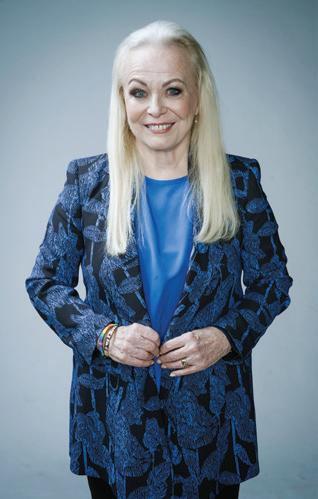
Diving through the National Film and Sound Archive’s stash of lms, made to record Australia’s emerging culture in the 1970s, screen legend Jacki Weaver (pictured) has uncovered a treasure trove of a time capsule in this docuseries full of gloriously daggy scenes but also radical social change. This third and nal part focuses on Film Australia’s later years and a turn towards more diverse lmmaking as women, Indigenous creatives and gay activists took control of how their own stories were told. Journalist Jan Fran, comedian Zoë Coombs Marr and several of the lms’ original subjects are among those who weigh in on these fascinating glimpses into ’70s society and how it shaped our
ABC TV (2) SBS (3) SEVEN (6) TEN (5) NBN (8, 80) 6.00 News. 9.00 News. 10.00 Planet America. (R) 10.30 The Paci c. (R) 11.00 The Newsreader. (Madl, R) 12.00 ABC News At Noon. 1.00 Miriam Margolyes In New Zealand. (Ml, R) 2.00 Grand Designs Transformations. (R) 2.55 Nigella At My Table. (R) 3.25 Grand Designs. (PG, R) 4.15 Long Lost Family. (PG, R) 5.00 A Bite To Eat With Alice. (R) 5.30 Antiques Roadshow. (R)
6.00 WorldWatch. 9.20 Designing Paradise With Bill Bensley. (R) 9.50 Food Markets. (R) 10.50 Our Coast. (PG, R) 12.00 BBC News At Ten. 12.30 ABC World News Tonight. 1.00 PBS News. 2.00 Saving Lives At Sea. (PGa, R) 3.00 Nula. 3.35 The Cook Up. (R) 4.05 Hungry For More: Spain. (PG, R) 4.35 Jeopardy! 4.55 Letters And Numbers. (R) 5.25 Mastermind Aust. (R) 6.00 Sunrise. 9.00 The Morning Show. (PG) 12.00 Seven’s National News At Noon. 1.00 Better Homes And Gardens. (R) 2.00 Suits L.A.
6.30 SBS World News.
7.30 James May: Our Man In Italy. (M)
8.30 Tony Robinson’s Marvellous Machines. (Ma, R) 9.25 Mysteries Of The Ancient Dead. (PG)
10.20 SBS World News Late. 10.50 A Body That Works. (Premiere, Ma) 11.50 Sisi. (MA15+ds, R) 12.45 Cycling. UCI World Tour. Paris-Nice Race. Stage 6. 2.45 Babies: Their Wonderful World. (PGaw, R) 3.50 Bamay. (R) 5.00 NHK World English News Morning. 5.30 ANC Philippines The World Tonight.
6.00 7News Local. 6.30 7News @ 6:30. 7.00 Better Homes And Gardens. Johanna Griggs meets up with Annie Smithers.
8.30 MOVIE: The Green Mile. (1999, MA15+av, R) Death row guards at a penitentiary in the ’30s nd themselves facing a moral dilemma when they discover one of their prisoners, a convicted murderer, apparently possesses miraculous powers. Tom Hanks, Michael Clarke Duncan, David Morse. 12.10 We Interrupt This Broadcast. (PGa, R) Sketch comedy series.
1.10 Travel Oz. (PG, R)
2.00 Home Shopping. (R)
4.00 Million Dollar Minute. (R) 5.00 NBC Today.
12.50pm The Nine Lives Of. 1.45 Hypothetical. 2.40 The Feed. 3.15 Over The Black Dot. 3.50 BBC News At Ten. 4.20 ABC World News Tonight. 4.45 PBS News. 5.45 The Fast History Of. 6.10 If You Are The One. 7.10 Jeopardy! 7.40 8 Out Of 10 Cats. 8.35 I Need Sexual Healing. 9.30 Secrets Of Playboy. 11.15 Pose. 1.05am Hells Angels: Kingdom Come. 2.00 QAnon: The Search For Q. 2.50 NHK World English News. 5.00 Al Jazeera. 6am
Tipping Point. (PG)
9News Afternoon.
Tipping Point Australia. (PG, R) 6.00 The Drew Barrymore Show. (PGas) 7.00 Frugal Foodie. (R) 7.30 Farm To Fork. (R) 8.00 The Bold And The Beautiful. (PGa, R) 8.30 Deal Or No Deal. (R) 9.00 Lingo. (R) 10.00 Australian Survivor.
6.00 NBN News. 7.00 A Current A air. 7.30 Rugby League. NRL. Round 2. Penrith Panthers v Sydney Roosters. From CommBank Stadium, Sydney. 9.55 Golden Point. A wrap-up of the Penrith Panthers versus Sydney Roosters match, with news and analysis.
10.45 MOVIE: Tango & Cash. (1989, Mlv, R) Two cops serve time in jail after being framed. Sylvester Stallone, Kurt Russell.
12.40 Tipping Point. (PG, R) Hosted by Ben Shephard.
1.30 TV Shop: Home Shopping. (R)
4.00 Skippy The Bush Kangaroo. (R)
4.30 Global Shop. (R)
5.00 TV Shop: Home Shopping. (R) 5.30 Fishing Australia. (R)
(31) 6am Children’s Programs. 2.45pm Beep And Mort. 3.00 Play School. 3.40 Mecha Builders. 3.55 Andy’s Dinosaur Adventures. 4.25 Builder Brothers Dream Factory. 5.20 Kangaroo Beach. 5.50 Paddington. 6.40 Ben And Holly. 7.05 Gardening Australia Junior. 7.35 Star Wars: Young Jedi Adventures. 8.00 Scooby-Doo And Guess Who? 8.30 Mythbusters “There’s Your Problem!”. 8.55 Robot Wars. 9.55 Merlin. 10.40 Late Programs. ABC FAMILY (22) 6am Children’s Programs. Noon Gossip Girl. 3.00 The Golden Girls. 3.30 The Nanny. 4.30 The Addams Family. 5.00 Bewitched. 5.30 I Dream Of Jeannie. 6.00 The Golden Girls. 6.30 The Nanny. 7.30 MOVIE: The Fault In Our Stars. (2014, M) 10.00 MOVIE: Rumour Has It... (2005, M) Midnight Love Island UK. 1.00 Life After Lockup. 2.00 The Nanny.
6.00 Deal Or No Deal. (R) Contestants compete in a high-stakes game where they must beat The Banker to win a cash prize.
6.30 The Project. A look at the day’s news. 7.30 The Graham Norton Show. Graham Norton chats with celebrities. 9.50 Tom Gleeson: Lighten Up. (Mls, R) Stand-up comedy performance from Gold Logie-winner and Hard Quiz host Tom Gleeson, featuring his famed sharp wit and dry humour in a trip down memory lane. 11.00 10’s Late News. Coverage of news, sport and weather. 11.25 The Project. (R) The hosts and guest panellists take a look at the day’s news, events and hot topics. 12.20 The Late Show With Stephen Colbert. (PG) Hosted by Stephen Colbert. 1.30 Home Shopping. (R) 6am Morning Programs.
9GO! (83) 6am On The Waterfront. (1954, PG) 8.00 Flash Of Genius. (2008, PG) 10.10 All The King’s Men. (2006, M) 12.30pm Anonymous. (2011, M) 2.55 Poms. (2019, PG) 4.35 Skating To New
E D Today’s target: 12 words average 16 words good 24+ words excellent
Find words of four letters or more. Every word must include the centre letter and each letter is used once only. Find at least one nine-letter word. No colloquial or foreign words, capitalised nouns, apostrophes, hyphens. No verbs or plural words ending in ‘s’. Solution list is not exhaustive. Ref: Macquarie Dictionary


ARIES (Mar 21 – Apr 19)
Many Aries folk (like me!) have had a bumpy start to 2025. After 11 weeks in retrograde mode, Mars (our ruling planet) finally turned direct on February 24. Then Venus started reversing through Aries (on March 2) and this week – from Saturday – Mercury starts reversing through Aries as well! How much can a robust Ram take?
If you have any major plans, projects or trips in the pipeline, don’t activate them until the last retrograde (Venus) finishes on April 13.
TAURUS (Apr 20 – May 20)
Don’t become so focused on the busyness and miniature of day-to-day life that you lose sight of the bigger picture. Look beyond the horizon Bulls! Setting short-term and long-term goals, dreaming big dreams, and making time for meditation, contemplation and/or relaxation are the secrets to a successful week. Beyond that, your motto for the future is from birthday great, singer-songwriter James Taylor: “The secret of life is enjoying the passage of time.”
GEMINI (May 21 – June 20)
Mercury (your patron planet) starts reversing through your networking/peer group zone on Saturday. So do your best to surround yourself with dependable, sensible, unflappable people. And make sure you double-check all texts (before you press send) and all appointment times (before you leave home). It’s also a good week to reset boundaries and expectations in a romantic, platonic or business relationship. Keep flexible because things are constantly changing!
CANCER (June 21 – July 22)
With Venus and then Mercury reversing through your career zone, the next few weeks could be tricky at work. Some possible scenarios? Your boss gives you extra work with short (and stressful) deadlines; a colleague becomes very difficult to work with; or some staff take sick or holiday leave, which increases your workload. If you’re looking for employment (or want to change jobs) then don’t start sending applications out until after April 13.
LEO (July 23 – Aug 22)
This week the Sun (your power planet) links up with Saturn and Uranus. So, try to get the balance right between the status quo and change; between responsibility and spontaneity; between stability and freedom. If you are travelling (especially interstate or overseas) make sure you double-check your itinerary, as Venus and Mars reverse through your travel and adventure zone. And – if you can – avoid signing contracts and legal documents until after April 13.
VIRGO (Aug 23 – Sep 22)
Mid-week is wonderful for catching up with an old friend. Then Mercury (your boss planet) is in retrograde mode from Saturday until April 7, so resist the urge to over-analyse, over-worry, over-stress and over-react. By all means think things through, but avoid getting caught up in an endless, obsessive loop. Try to relax and let your creative side express itself. As birthday great Albert Einstein observed: “Imagination is more important than knowledge.”
LIBRA (Sep 23 – Oct 22)
Perfectionist-prone Librans love things to run smoothly but (courtesy of Venus and Mercury reversing through your relationship zone) there’s disruptive energy about this week. So, drop the carefully planned schedule and take things as they come. A relationship with a lover, relative, neighbour or work colleague could veer off in a confusing direction. Or something you say, text or post on social media could receive a disappointing response.
SCORPIO (Oct 23 – Nov 21)
It’s a good week to revise your diet and/or rejig your fitness routine, as retrograde Venus and retro Mercury activate your health and wellbeing zone. It’s important to choose nutritious food and regular exercise that you enjoy, so you can maintain healthy habits into the future. Your daily work schedule could also be disrupted (and feel like it’s going backwards) or you could find yourself out of step with a colleague. Patience and persistence will see you through.

SAGITTARIUS (Nov 22 – Dec 21)
This week the Sun and Saturn hook up in your home zone, so extra domestic chores and/ or family responsibilities could cramp your spontaneous Sagittarian style. Venus and Mercury are also reversing through your friendship zone, so an old rivalry could resurface or a controversial new friend could stir up your established peer group. Friday’s positive Sun/Uranus link favours making new discoveries at work or entertaining loved ones at home.
CAPRICORN (Dec 22 – Jan 19)
On Saturday, Mercury turns retrograde (until April 7). Mercury is the planet of clear thinking, communication (talking, texting and writing), transport, travel, commuting, commerce, computers, media and the internet. So – when it’s retrograde – it’s not a good time to do the following things … sign contracts; start a job or business; buy a phone, computer, car or home; launch a website; install new software; go on a business trip or embark on a big holiday.
AQUARIUS (Jan 20 – Feb 18)
Put on your problem-solving hat Aquarius! Retrograde Venus and retrograde Mercury reignite your desire to help a friend, neighbour or family member in a creative and hands-on fashion. You’re keen to tackle a problem (at home or within your local community) in a strategic and innovative way. When it comes to money matters, Saturn urges you to think conservatively and plan for the long-term. So spontaneous spending sprees are (temporarily) off the menu.
PISCES (Feb 19 – Mar 20)
Expect a challenging week, as Saturn links up with the Sun (in your sign) plus Venus and Mercury reverse through your money zone. Perceptive Pisceans – aim to be super patient with your partner, extra kind to your family, oh-so cooperative with your work colleagues and uber disciplined with deadlines. And try to keep spending to an absolute minimum, as you curb shopaholic tendencies, stick to a strict weekly budget, and put any extra cash into savings.

The 39 Steps: Mystery and Comedy Take Centre Stage in Grafton
Date & Time:
Wednesday, 2 April 2025, plus four additional dates
7:00 PM – 10:00 PM
Criterion Theatre, 149 Oliver St, Grafton, NSW 2460
Book Tickets: https:// events.humanitix.com/ the-39-steps-kbbytcw8
Grafton’s Criterion Theatre is set to host the mystery-comedy sensation, The 39
Steps—a hilarious and fast-paced play where four actors take on multiple roles with lightning-fast costume changes and sidesplitting comedic timing. Brought to the stage
by the same creative team behind 2024’s hit production, The Messiah, this adaptation promises a mix of suspense and slapstick humour, ensuring a fun-flled night for theatre lovers. Opening Night Fundraiser
The Opening Night show will feature a Monster Raffe fundraiser for the Grafton Scouts, helping them raise funds for their upcoming Uluru Jamboree this Easter.
Seating & Accessibility
• Table bookings only – single and multiple seat reservations available.
• BYO drinks and nibbles – patrons are encouraged to bring their
own refreshments.
• Tea, coffee, and snacks available for purchase from the Criterion’s canteen.
• Doors open one hour before the performance.
• Wheelchairaccessible seating available at Table G. With its fast-paced action, quick character changes, and clever humour, The 39 Steps guarantees an evening of entertainment at one of Grafton’s most beloved theatre venues. Book your tickets now for a night of mystery, comedy, and community spirit!

Colum McCann in Conversation: A Literary Evening in Bangalow
Date & Time: Wednesday, 7 May 2025 | 6:30 PM – 7:30 PM
Location: A&I Hall, 3 Station St, Bangalow, NSW 2479
Book Tickets: https://

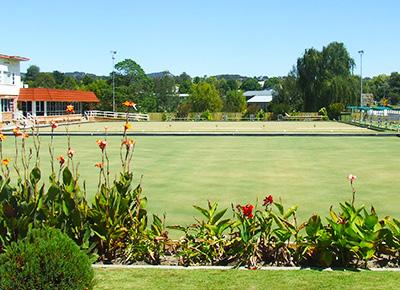

events.humanitix.com/ colum-mccann-2025
Byron Writers Festival presents an exclusive literary event featuring award-winning Irish author Colum McCann

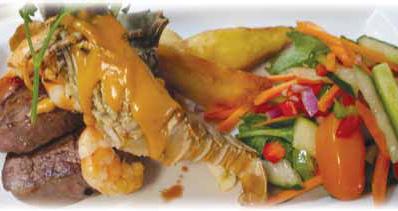

in conversation with Mick O’Regan. McCann will discuss his latest novel, Twist, a riveting and deeply meditative story about men at sea, technology, and the fragility of human connection.
About Twist McCann’s newest novel follows Anthony Fennell, an Irish journalist and playwright sent to investigate underwater fber-optic cables that carry the world’s digital information. His assignment takes him to West Africa, where he meets John Conway, a cable repair ship engineer and freediver. As the crew sets off to repair a series of deep-sea cable breaks, the characters become
entangled in personal and philosophical dilemmas about love, loss, and belonging.
Set against the backdrop of the vast ocean and the digital age’s hidden infrastructure, Twist explores narrative, truth, and the delicate connections that bind our lives together.
About Colum McCann Colum McCann is an internationally acclaimed Dublin Literary Prize and National Book Award-winning author, best known for works such as Apeirogon, TransAtlantic, Let the Great World Spin, and This Side of Brightness.
A contributor to The New York Times, McCann is also the co-founder of Narrative
4, a global storytelling non-proft promoting community action and change.
Event Details
• Doors Open: 5:30 PM – Enjoy Pocket Curries and a bar before the event.
• Conversation Begins: 6:30 PM –Settle in for an hour of thought-provoking discussion.
This is a rare opportunity to hear one of the world’s most celebrated contemporary authors share insights into his storytelling craft, literary inspirations, and the themes shaping Twist. Secure your tickets early for an evening of literature, conversation, and deep refection.

Forget paying top dollar for a dual-cab ute—
GWM is here to prove you don’t have to sell a kidney to get a capable workhorse. The 2025 GWM Cannon Ultra comes armed with more power, better towing capacity, and a host of fancy new features, all while keeping its price tag frmly below the competition.
Sure, some purists might scoff at the idea of a budget-friendly ute taking on the big dogs, but GWM has been studying the game hard. And now, it’s ready to shake up the ute segment with a serious bang.
How Much for This Cannon?
At $43,490 drive-away, the Cannon Ultra sits just below the fagship Vanta ($45,490) and XSR ($49,990) but packs plenty of punch.

In fact, even at its most expensive, the Cannon is still thousands cheaper than the starting price of the Ford Ranger, Toyota HiLux, or Isuzu D-Max.
GWM has trimmed the fat—no more 4x2 versions or Cab Chassis (for now)—but what’s left is a sharper, betterequipped four-model range priced from $40,490 to $49,990.
Prices have crept up ($3,000–$5,000 more than last year), but considering the beefy equipment upgrades, it’s hard to complain.
Plus, with the seven-year warranty, fve years of roadside assist, and capped-price servicing, it’s one of the best ownership deals around.
What’s New in the 2025 GWM Cannon Ultra?
GWM isn’t just throwing in a few fancy badges and calling it a day. This is a serious upgrade.
• New 2.4L turbo-

diesel engine (up from 2.0L)
• More power & torque (135kW & 480Nm)
• Nine-speed automatic
load in the back, the Cannon pulled like a champ, unlike the previous version that felt like it was dragging a
Big bang for your buck. Don’t overlook it.
transmission (up from eight-speed)
• Towing capacity up to 3,500kg
• Sleek new design(dechromed front, embossed tailgate)
• Bigger screens (12.3inch infotainment, 7.0-inch digital dash)
• More tech & comfort features (cooled wireless charger, sunroof, ambient lighting)
There’s also a front diff lock on the off-roadfocused XSR model, but every version (except the XSR) keeps the BorgWarner permanent 4x4 system.
How Does It Drive?
Now, onto the important stuff—how does the Cannon Ultra handle the real world?
Power & Performance
The new 2.4L turbodiesel is a huge step up. It’s smoother, stronger, and quieter than the old 2.0L, and the nine-speed auto makes for effortless highway cruising. Even when we threw a 650kg
small planet.
Fuel Economy (Tested)
• Freeway: 6.6L/100km
• Country roads (spirited driving): 11.5L/100km
• Off-road: 20.2L/100km
• Load hauling: 11.1L/100km
For a big dual-cab, 8.8L/100km average is mighty impressive.
In comparison, the old 2.0L model gulped down 11L/100km—so this is a solid improvement.
Ride & Handling
The suspension has been tweaked, and it shows. Unladen, it can feel a bit jittery, but load it up and it smooths out nicely. Steering is heavier than ideal, and the 13m turning circle makes U-turns an event, but on-road stability and grip have improved. Off-road, the Cannon handled itself well, especially in low-range with the locked rear diff. However, ground clearance remains a weak spot, so those side skirts might need some
protection if you’re heading into serious terrain.
Interior: Is It Lux or Just Lux-ish?
For under $45,000, the Cannon Ultra is shockingly wellappointed.
• Leather-accented seats (heated & cooled!)
• Sunroof (rare in a ute)
• Ambient lighting (for those moody night
• Chinglish alert! (Flameout Unlocking? Doubling Assist?
Wisdom Dodge? �)
Should You Buy a GWM Cannon Ultra?
Four years ago, the GWM Cannon was an underdog. Now, it’s a genuine threat to the segment’s biggest names. It’s more powerful, better equipped, and still ridiculously well-priced. The new drivetrain is a

drives)
• 360-degree camera (a lifesaver in tight spaces)
• Wireless Apple
CarPlay & Android Auto
Legroom and headroom are plentiful, even for taller drivers, and storage is decent. The steering wheel fnally adjusts for reach and rake (though a bit begrudgingly), and the infotainment system is modern, if a little touchscreen-heavy.
Annoyances?
• No built-in sat-nav (bring your phone)
• Overly sensitive lane-keeping assist (turning it off every start is a chore)
• Thirsty off-road mode (but hey, that’s expected)
game-changer, and while it’s not quite a Ford Ranger V6, at this price point, who cares?
If you don’t want to spend $60,000+ on a dual-cab ute, the 2025 GWM Cannon Ultra deserves a serious look. 2025 GWM Cannon Ultra at a Glance: Price: $43,490 (driveaway)
Engine: 2.4L fourcylinder turbo-diesel Output: 135kW / 480Nm
Transmission: Ninespeed automatic Fuel: 8.4L/100km (ADR Combined)
Warranty: 7 years / 5 years roadside assist
Verdict: Big bang for your buck. Don’t overlook it.
All major parties acknowledge housing affordability is a top-tier election issue. However, their approaches vary:
• Labor: A mix of frst-home buyer support, rental assistance, and housing supply investment.
• Coalition: Focus on frst-home buyers, migration cuts, and infrastructure funding.
• Greens: Strong advocacy for renters, public housing, and tax changes on property investors.
What Comes Next?
With the election expected by May 17, housing will remain a key battleground issue as voters weigh which party’s policies align with their needs.
Housing Policies on
Offer This Federal Election As Australia approaches the 2025 federal election, housing affordability and rental stress have become key political issues. With soaring property prices, rising rents, and a supply shortage, major parties are pitching their housing policies to win over voters.
The election must be held by May 17, and while it hasn’t been offcially called yet, political parties are already unveiling their plans to address housing challenges.
Housing Market Trends
Since the Last Election
Since the May 2022
federal election, the housing market has become increasingly diffcult for buyers and renters:
• Median house prices have increased 11% to $825,000, while unit prices have risen 7%, according to PropTrack.
• House rents have increased 27% to $635 per week, while unit rents have surged 38% to $620 per week.
• Housing affordability remains at its lowest level on record. With these challenges in mind, here’s how Labor, the Coalition, and the Greens propose to tackle the housing crisis.
Labor’s Housing Policies
The Labor government has focused on implementing its 2022 election housing policies, with a mix of frst-home buyer support, rental assistance, and housing supply initiatives.
Support for First-Home Buyers
• Help to Buy Scheme: A shared equity program where the government contributes up to 40% of the property price for eligible buyers.
Homeowners must repay the government’s share when they sell their home.
• Easing Home Loan
Borrowing Rules: Plans to allow HECS/ HELP student debt to be excluded from mortgage applications, increasing borrowing power.
Boosting Housing Supply




• $10 Billion Housing Australia Future Fund (HAFF): Aims to build 30,000 social and affordable homes over fve years.
• Social Housing Accelerator & Housing Infrastructure Facility: Investments to support home building and address supply shortages. Support for Renters
• Increased Commonwealth Rent Assistance: Rent assistance payments have increased by 45% since Labor took offce.
• Stronger Renter Protections: Collaboration with state and territory governments to improve tenant rights nationwide. Foreign Investment Restrictions
• Two-Year Ban on Foreign Investors Purchasing Existing Homes: Effective from April 2025, aimed at reducing housing demand pressures.
Coalition’s Housing Promises
The Coalition opposition is focusing on helping frst-home buyers and reducing migration to ease housing demand.
Helping First-Home Buyers
• Super for Housing: First-home buyers could withdraw up to $50,000 (or 40%) from their superannuation to fund a house deposit, with funds repaid upon selling the home.
• Easing Mortgage Rules: Plans to reduce the mortgage serviceability buffer, making it easier for home loan borrowers to access fnance.
Tackling Housing Supply
• $5 Billion Housing Infrastructure Fund: To fund essential infrastructure (roads, water, power, sewerage) for new housing developments.
• National Construction Code


Freeze: A 10-year freeze on further changes to building regulations to keep construction costs lower.
Migration Policy & Housing Demand
• Reducing Permanent Migration: A two-year reduction from 185,000 to 140,000 per year.
• Limiting International Student Numbers:
o Fewer foreign students at metropolitan universities.
o Higher visa fees and new rules to restrict provider-switching.
Greens’ Housing Promises
While the Greens are unlikely to form government, they could hold balance of power in a hung parliament, infuencing housing policy.
Support for Renters
• Rent Caps & Freezes: Calls for a national rent freeze and rent increase caps.
affordable homes.
• Phasing Out Negative Gearing for Investors with More Than Two Properties:
o Supporters say this would reduce investor demand and make housing more affordable.
o Opponents argue it would discourage investment and increase rents.
• Discounted ‘HomeKeeper’ Mortgages: A lowinterest mortgage scheme for frst-home buyers. Which Housing Policy Will Win Over Voters? Housing affordability has become a major election issue, with each party taking a different approach:
• Labor: Focuses on homeownership support, rental assistance, and housing supply investment.
• Coalition: Prioritises frst-home buyers, migration cuts, and infrastructure funding.
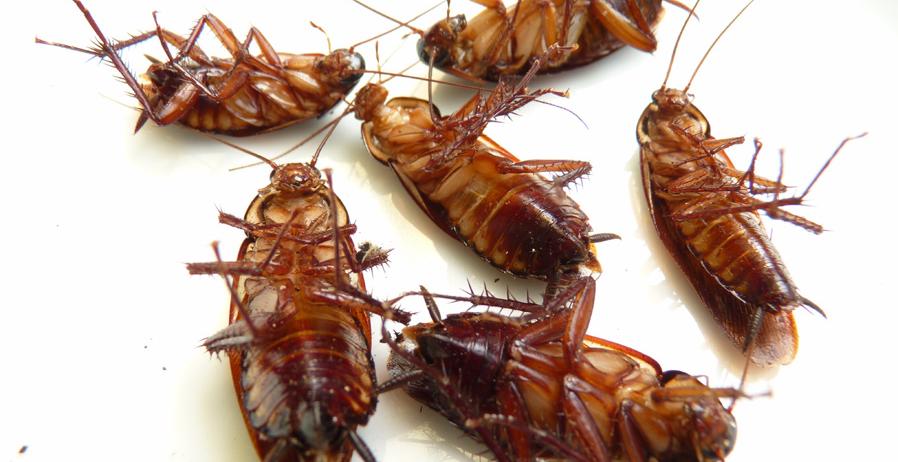














• National Renters Protection Authority: A new federal body to enforce and protect tenant rights.
Affordable Housing & Public Development
• 360,000 Public & Affordable Homes Over Five Years: Proposes a public property developer to build
• Greens: Advocates for renter protections, public housing expansion, and tax changes for property investors.
With the election expected by May 17, housing will remain a top issue as voters weigh which policies align with their needs.
From simple meals to show-stopping feasts, there’s something for everyone.

INGREDIENTS
• 500g pkt chicken mince
• 45g (1/2 cup) herb plus garlic breadcrumbs
• 70g (½ cup) Grated Parmesan Cheese
• 1 garlic clove, crushed
• 1 egg, lightly whisked
• 2 tbsp olive oil
• 150g small cup mushrooms, quarted
• 1 red capsicum, deseeded, coarsely chopped
• 1 brown onion, fnely chopped
• 510g jar Tomato & Basil Pasta Sauce
• 80g (½ cup) Pitted Kalamata Olives
• 300g Spirals Pasta
• Fresh basil leaves, to serve (optional)
METHOD
1. Place the chicken, breadcrumbs, parmesan, garlic and egg in a bowl. Mix well to combine. Use damp hands to shape the mixture into 12 balls. Flatten

slightly to form rissole shapes.
2. Heat 1 tbsp oil in a large frying pan over medium heat. Cook the rissoles, in batches, for 3-4 minutes on each side or until golden and almost cooked through. Transfer to a plate.
3. Heat the remaining oil in the same pan over medium-high heat. Add the mushroom, capsicum and onion. Cook, stirring, for 5-8 minutes or until a little golden around the edges. Add the pasta sauce and 250ml (1 cup) water. Bring to a simmer. Reduce the heat to low. Add the rissoles and cook, stirring occasionally, for 10 minutes or until cooked though and the sauce thickens slightly. Stir in the olives.
4. Meanwhile, cook the pasta in a saucepan of salted boiling water following packet directions or until al dente. Drain.
5. Divide the pasta among serving bowls. Top with the rissoles and sauce. Sprinkle with basil leaves, if desired, to serve.
• 1 small red onion, halved, thinly sliced
• 60ml (1/4 cup) water
• 1 tbsp red wine vinegar
• 1 tsp salt
• 4 Lebanese cucumbers, halved lengthways, thinly sliced diagonally
• 1/2 cup fresh mint leaves, coarsely chopped
• 1/3 cup fresh continental parsley leaves, coarsely chopped
• 60ml (1/4 cup) fresh lemon juice
• 2 tbsp extra virgin olive oil
• 1 small garlic clove, crushed
• 100g feta, crumbled
METHOD
1. Place the onion, water, vinegar and salt in a bowl. Set aside for 5 minutes to infuse. Drain and rinse under cold running water. Pat dry with paper towel. Place the onion, cucumber, mint and parsley in a bowl.
2. Whisk the lemon juice, oil and garlic in a jug. Season with salt and pepper. Drizzle over the salad. Top with the feta.

INGREDIENTS
• 450g pkt vanilla cupcake mix
• 60g butter, softened
• 2 eggs
• 2/3 cup (160ml) milk
• 1 cup (80g) desiccated coconut
• 15 white marshmallows
• Pink and white heart-shaped sprinkles, to decorate
• 6 pink mini marshmallows
• 6 red sugar coated chocolates
• Black writing icing, to decorate Buttercream
• 125g butter, softened
• 3 cups (480g) icing sugar mixture
• 1 tbsp milk
• 1 tsp vanilla essence
METHOD
1. Preheat oven to 180C. Line 12 holes of a 1/3-cup (80ml) muffn pan with paper cases. Make cupcakes using the cupcake mix, butter, eggs and milk following packet directions (reserve icing sachet for another use). Cool completely.
2. To make the buttercream, use an electric mixer to beat the butter in a bowl until very pale. Gradually add the icing sugar, in batches, beating well after each addition. Add the milk and vanilla and beat until combined.
3. Place the coconut in a small bowl. Reserve 1 tablespoon buttercream. Spread the remaining buttercream over each cupcake. Dip the top of each cupcake in the coconut to lightly coat. Cut the white marshmallows in half. Arrange 2 marshmallow halves, cut-side down, on half the cupcakes to make feet. Use a little of the reserved buttercream to attach pink heart sprinkles to feet to make paw pads. Spread 6 marshmallow halves with reserved buttercream and dip in coconut to make a tail. Arrange on the cupcakes above the feet.
4. Cut pink mini marshmallows in half. Place on the cut sides of the remaining white marshmallows to make ears. Place on the remaining cupcakes. Decorate with the red sugar coated chocolates for noses and heart sprinkles for teeth. Decorate with the writing icing for eyes and whiskers.



Banff, Canada: A YearRound Wonderland of Natural Beauty and Culture
Nestled in the heart of the Canadian Rockies, Banff, Alberta is a world-renowned destination known for its breathtaking landscapes, rich wildlife, and vibrant cultural scene. Located within Banff National Park, Canada’s oldest national park, this mountain town offers a perfect blend of outdoor adventure, history, and hospitality. Whether visiting in summer or winter, Banff provides an unforgettable experience.
Seasons and Weather in Banff
Banff experiences four distinct seasons, each offering unique opportunities to explore its natural beauty.
Spring (March to May)
Spring in Banff sees the snow begin to melt, revealing lush green valleys while the mountain peaks remain snow-capped. Temperatures range from -8°C to 15°C (18°F to 59°F), and wildlife, including elk, bears, and deer, becomes more
active. This is a great time for hiking, wildlife watching, and earlyseason rafting.
Summer (June to August)
Summer is peak tourist season, with warm temperatures averaging 7°C to 25°C (45°F to 77°F). The long daylight hours allow for hiking, mountain biking, and canoeing on stunning turquoise lakes like Lake Louise and Moraine Lake. Visitors can also experience the Banff Summer Arts Festival, featuring live music and performances.
Autumn (September to November)
Fall transforms Banff into a golden paradise, with larch trees turning bright yellow against the rugged mountains. Temperatures range from -5°C to 15°C (23°F to 59°F), and the town sees fewer crowds. This season is perfect for scenic drives, photography, and enjoying cozy evenings by the freplace.
Winter (December to February)
Winter in Banff is a snowy wonderland, with temperatures dipping between -20°C and -5°C (-4°F to 23°F). The town
becomes a paradise for skiers, snowboarders, and ice climbers, with world-class resorts like Banff Sunshine Village and Lake Louise Ski Resort. Other winter activities include dog sledding, ice skating, and soaking in the Banff Upper Hot Springs.
The People and Culture of Banff
Banff has a small but diverse population, with around 8,000 residents.
As a top international tourist destination, the town attracts visitors and workers from around the world, creating a multicultural atmosphere.
Local Customs and Traditions
• Respect for nature is at the heart of Banff’s culture. Visitors are encouraged to follow Leave No Trace principles to protect the national park’s delicate ecosystem.
• Banff hosts Indigenous cultural experiences, celebrating the traditions of the Stoney Nakoda, Blackfoot, and Tsuut’ina Nations, whose ancestral lands include Banff National Park.
• The town has a thriving arts scene, with
galleries, music festivals, and theaters showcasing local talent. The Banff Centre for Arts and Creativity is a hub for artists from all over the world.
Top Attractions and Sites to See in Banff
1. Banff National Park
The crown jewel of the region, Banff National Park is home to pristine alpine lakes, majestic peaks, and diverse wildlife. Visitors can hike scenic trails, drive the Icefelds Parkway, or take in the stunning views from the Banff Gondola.
2. Lake Louise and Moraine Lake
These iconic glacier-fed lakes are famous for their brilliant blue waters and dramatic mountain backdrops. Visitors can hike, canoe, or simply take in the breathtaking scenery.
3. Banff Gondola
For the best panoramic views, take the Banff Gondola to the top of Sulphur Mountain, where you can see six mountain ranges and enjoy a meal at the Sky Bistro.
4. Fairmont Banff Springs Hotel
Known as the “Castle in the Rockies”, this
luxurious hotel is an architectural masterpiece and a historic landmark. Even if you’re not staying overnight, visiting for afternoon tea or a guided tour is a must.
5. Bow Falls
A short hike from downtown Banff, these powerful waterfalls offer a picturesque viewpoint, especially in spring and fall when water levels are high.
6. Cave and Basin
National Historic Site
This is the birthplace of Canada’s national park system, where visitors can explore thermal hot springs, historical exhibits, and underground caves.
7. Banff Upper Hot Springs
For relaxation, soak in the Banff Upper Hot Springs, a naturally heated mineral pool with stunning mountain views, perfect after a long day of exploring.
8. Johnston Canyon
This stunning canyon features waterfalls, deep gorges, and catwalks that allow visitors to get up close to the rushing waters. In winter, the frozen waterfalls are a spectacular sight.
9. Icefelds Parkway
One of the most scenic drives in the world, the Icefelds Parkway stretches between Banff and Jasper National Parks, passing glaciers, waterfalls, and incredible viewpoints. A stop at the Columbia Icefeld Skywalk is a must.
10. Sunshine Meadows
A summer highlight, Sunshine Meadows is famous for its vibrant wildfowers and breathtaking alpine views, making it one of the best hikes in the region.
A Destination for All Seasons
Whether you visit in the height of summer for hiking and canoeing, or in winter for skiing and cozy freside retreats, Banff is a destination that offers something magical year-round. Its breathtaking landscapes, welcoming community, and endless opportunities for adventure make it one of Canada’s most beloved travel destinations.
For those seeking outdoor thrills, cultural experiences, or simple relaxation in nature, Banff is a must-visit destination that never fails to impress.

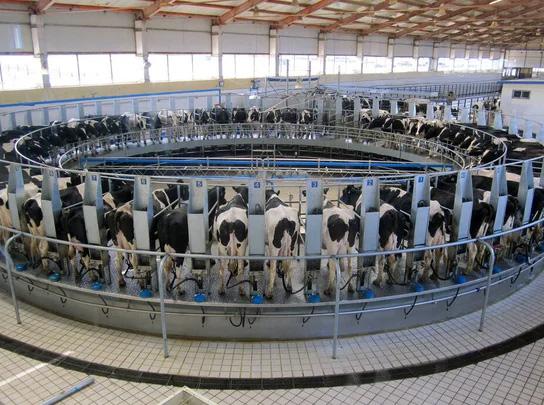


e Northern Rivers Times March 13, 2025
LISMORE SALEYARDS 4TH MARCH 2025
Lismore Cattle Market Report – Ian Weir & Son
A total of 500 cattle were sold at Ian Weir & Son’s Lismore Saleyards on Tuesday, 4 March 2025.
A strong yarding of cows saw top prices reaching $2.82 per kilo, with Rob Garrett’s line of Brangus returning $1,950. Col Martin’s
APL/MCDOUGALL’S SHEEP & LAMB REPORT –WEEK ENDING 5/3/2025
A total of 1,660 head were presented at this week’s Sheep & Lamb sale, with a smaller yarding compared to previous weeks. The offering included a fair mix of light and store lambs, while some mutton lines were of lighter weight and fnish. Market Overview:
• Local and trade buyers were active on light processing types, with strong competition between restockers and butchers.
• The heavy lamb market remained frm despite limited numbers.
• Mutton prices held strong, provided weight and type aligned. Price Summary (compared to last sale):
• Lambs: Topped at $240, averaging $136.33 ($12 down per head)
• Hoggets: Topped at $140, averaging $101.25 ($11 down per head)
NORTHERN RIVERS LIVESTOCK EXCHANGE: PRIME CATTLE SALE REPORT – MARCH 5, 2025
The Northern Rivers Livestock Exchange held its latest prime cattle sale on March 5, 2025, presenting a total of 1,336 head for auction. The sale featured a variety of stock categories, including bullocks, bulls, cows, heifers, steers, and vealers, with strong demand refected across multiple price points. Below is a comprehensive breakdown of the market performance.
Per Head Sales Performance
In the per-head category, the sale presented six individual lots comprising various stock types. The key highlights were:
• Bobby Calves: 1 lot sold at $65.00 per head.
• Cows & Calves: 2 lots reached a solid $1,000.00 per head, totaling $2,000.00.
• Heifers: 2 lots sold at $200.00 per head, amounting to $400.00 in value.
• Steers: 1 lot fetched $200.00.
• Vealers: 4 lots sold for $190.00 per head, totaling $760.00. Overall, the per-head category recorded a total of $3,425.00, with prices ranging between $65.00 and $1,000.00 per head.
Per Kilogram Sales Performance
The per-kilogram category saw a total of 508 individual lots,
BROUGHT TO YOU BY HAROLD CURRY PH: 02 6736 1344
TENTERFIELD MARKET REPORT –MARCH 3, 2025
Bullocks Sell to $2,496 as Strong Demand Drives Prices Up The fortnightly cattle sale at Tenterfeld saw an increase in yarding numbers, with a total of 803 head on offer. A strong lineup of bullocks, steers, cows, heifers, and bulls resulted in competitive bidding and solid market performance across all categories.
Market Overview
Total yarding: 803 head
• Top price for bullocks: $2,496.00
• Highest price per kg (weaner steers): 401.2 cents
• Best cow price: $1,914.26
• Top-selling bull: $2,900.00 Bullocks and Steers
The sale featured quality bullocks and steers, achieving strong
Charolais cows sold at $2.76 per kilo, returning $1,891. Most heavy cows in good condition ranged between $2.65 and $2.76 per kilo, marking a 20c per kilo drop compared to the sale two weeks ago. Secondary cows sold between $1.75 and $2.40 per kilo.
Yearling/weaner steers were of mixed quality, refected in varied pricing. Premium lines with good quality and conformation sold from $3.90 to $4.20 per kilo, with returns between $1,000 and $1,220. Lesser-quality steers generally ranged between $2.90 and $3.70 per kilo. Weaner heifers/vealers traded at similar rates to recent sales, with
• Ewes: Topped at $132, averaging $83.20 ($10 down per head)
• Wethers: Topped at $132, averaging $64.72 ($36 down per head)
• Ram Lambs: Topped at $150, averaging $98.67 ($4 down per head)
• Rams: Topped at $130, averaging $82 ($23 up per head)
• Total yarding average: $117.41 per head (down $3 per head)
Vendor Sales Highlights:
• Hurley & Weiss:
o 48.6kg Dorper lambs to GR Prime – $195
o 35kg Ram lambs to restockers – $69
o 53.8kg Hoggets to Fletchers International – $120
o Ewes to Thomas Foods – $90
o Wethers to Fletchers International – $122
• Alison & Nathan Lister:
o 51.1kg Dorper lambs to Thomas Foods – $192
o 53.6kg Crossbred lambs to Take It Easy Meats – $217
o 46.9kg Dorper lambs to GR Prime – $182
• Denis Moran:
o 49.3kg Suffolk lambs to GR Prime – $181
offering diverse stock options with varied weight ranges and pricing:
Bullocks
• 100 head were sold, with prices ranging from $170.00 to $350.00 per kg.
• The average price stood at $297.40 per kg.
• The total weight for this category was 54,520 kg, yielding an overall value of $162,154.25.
Bulls
• A total of 32 bulls were sold at prices between $156.20 and $270.20 per kg.
• The average price was $224.60 per kg.
• With a combined weight of 20,500 kg, the bulls contributed $46,051.62 in total sales.
Cows
• The largest category of the sale, 399 cows, saw prices between $80.00 and $290.00 per kg.
• The average price was $244.80 per kg.
• With a collective weight of 188,510 kg, cows accounted for a total value of $461,446.12.
Heifers
• 288 heifers were auctioned, fetching between $156.20 and $338.20 per kg.
• The average price stood at $282.00 per kg.
• The total weight for this category was 76,220 kg, generating $214,934.20 in sales.
Steers
• A signifcant volume of 496 steers was sold, with prices
prices:
Steers topped at 381.2 cents per kg.
Heavy bullocks sold to 325 cents per kg.
Cows and Heifers
A large yarding of cows and heifers attracted solid demand:
• Heavy cows sold up to 282.2 cents per kg.
• Medium-weight cows reached 288.2 cents per kg.
• Light cows made up to 200 cents per kg.
• The best heifers fetched 330 cents per kg.
Weaner and Yearling Cattle
In the trade section:
• Weaner steers hit 401.2 cents per kg.
• Weaner heifers reached 337.2 cents per kg.
• Both categories showed strong returns to the paddock.
Bulls
A mixed yarding of bulls saw top
of 290 cents per kg.
Breakdown (Cents per Kilogram)
most selling between $2.75 and $3.25 per kilo, and a top price of $3.48 per kilo.
Upcoming Sales at Lismore Saleyards Thursday, 13 March – Special Weaner Steer & Heifer Sale (9 AM) Saturday, 15 March – Beef Breeder Sale (9 AM) Please book in any cattle you wish to sell. Clearing Sale Update
The Clearing Sale at Boatharbour (A/C Brian Patch Estate) has been postponed to 22 March due to expected fooding. Report by Glenn Weir
o 48kg Suffolk lambs to Thomas Foods – $169
o 46.8kg Suffolk lambs to Warwick Meats – $152
o 42kg Suffolk lambs to Shelley F/T – $134
• Kim Aisthorpe:
o 48.1kg Dorper lambs to GR Prime – $198
o 45.3kg Dorper lambs to GR Prime – $170
o Ewes to Thomas Foods – $124 and $73
• Warren & Wendy Schelbach:
o 47.2kg Dorper lambs to Jock Young Meats – $188
• Trevor & Val Lindenmayer:
o 55.3kg Aussie White X lambs to Take It Easy Meats – $186
• Carbean Past Co: o 48.8kg Dorper lambs to GR Prime – $170
o 44.7kg Dorper lambs to GR Prime – $150
• Bodumba Farming:
o 43.7kg Dorper X lambs to GR Prime – $120
o 53.5kg Hoggets to Fletchers International – $128
• Michael Davison: o 43.2kg Dorper lambs to GR Prime – $124
o 51.2kg Hoggets to Elders Inglewood – $91
o Wethers to Self Meats – $128
ranging from $120.00 to $428.20 per kg.
• The average price was $347.10 per kg.
• This category had a total weight of 145,930 kg, with an aggregate value of $506,577.76.
Vealer Bulls
• 21 vealer bulls entered the sale, selling for between $200.00 and $342.20 per kg.
• The average price was $280.60 per kg.
• The total weight of 5,385 kg resulted in a total sales value of $15,107.99.
Overall Sale Summary
• Total head sold: 1,336
• Total lots: 508
• Lowest price per kg: $80.00
• Highest price per kg: $428.20
• Total weight sold: 491,065 kg
• Total market value: $1,406,271.94
The March 5, 2025, Prime Cattle Sale at the Northern Rivers Livestock Exchange demonstrated strong market conditions, with competitive bidding across all stock categories. The steer and cow categories led in volume and total value, while bullocks and heifers attracted premium prices per kilogram.
The next scheduled prime cattle sale promises continued opportunities for buyers and sellers to engage in a dynamic and active livestock market.
For further inquiries and upcoming sale schedules, please contact the Northern Rivers Livestock Exchange.
CONTACT US - The Northern Rivers Times Rural Edition ✆ 1300 679 787 SALES 02 6662 6222 sales@heartlandmedia.com.au Albury - 02 6080 9520, Casino - 02 6662 6222, Dubbo - 02 5858 4078, Grafton - 02 5632 3041, Moree - 02 6794 3889, Tamworth - 02 5719 1656, Wagga Wagga - 02 5940 8516 Directors, co-owners and co-founders: Jeffrey Gibbs and Sharon Bateman ISSN: 2652-7928 a Genesis Media company ABN: 84 134 238 181 All rights reserved © 2024 Distribution Coffs Harbour north to Southport and west to Tenterfield weekly. www.thenorthernriverstimes.com.au
The NSW Department of Primary Industries and Regional Development (DPIRD) has released a comprehensive report from the Milking Edge Project, providing key insights for Australian dairy farmers considering Automated Milking Systems (AMS).
The fndings confrm that, on average, AMS-equipped farms achieve comparable economic and physical performance to conventional milking systems. However, AMS offers a distinct advantage by freeing up labour for other essential farm tasks, such as pasture management, which can enhance overall farm productivity.
Key Findings from the Report
According to Juan Gargiulo, DPIRD Development Offcer, the study provides clear guidance on the economic and operational performance of AMS, supporting farmers in making informed decisions about
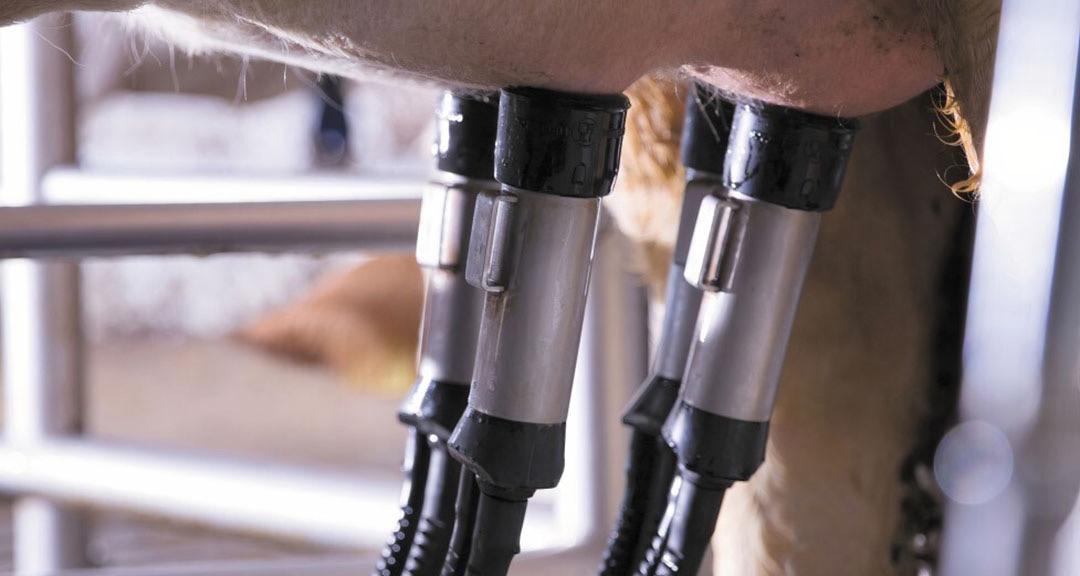
its adoption.
Key insights include:
• Farm size & robotic units – Australian AMS farms typically milk 150 to 240 cows using three to four robotic units.
• Milk production –Daily milk output per cow ranged from 19.3 to 26.3 kilograms.
• Milking frequency
– Cows were milked an average of 2.17 times per day, with each robot harvesting approximately 1,200 kg of milk daily.
• Proftability drivers
– The study identifed robot effciency (milk harvested per robot), labour effciency, and pasture utilisation per hectare as critical factors in AMS success.
“These fndings establish important benchmarks for AMS proftability and effciency, equipping farmers and industry stakeholders with the data needed to make informed technology investment decisions,”
Mr. Gargiulo said.
“While AMS performance varies across farms, the research highlights clear opportunities for productivity and proftability gains, particularly by reallocating labour to tasks such as herd health, pasture management, and business operations— enhancing overall farm sustainability.”
AMS Adoption and
Since its global introduction in 1992, AMS has transformed dairy farming, with over 50,000 systems now in operation worldwide. In Australia, AMS adoption remains at approximately 1.5% of dairy farms, though interest is growing as more farmers evaluate its benefts.
A common perception in the Australian dairy industry is that AMS adoption leads to more frequent milking and increased milk production. However, the report challenges this assumption:
“While this is often the case in European and North American dairy systems, where
cows are housed in barns with close access to AMS units, Australia’s pasture-based systems show similar milking frequency and production levels to conventional systems,”
Mr. Gargiulo explained.
“This is largely due to the greater distance between paddocks and milking stations in Australian farms, requiring cattle to walk further compared to barn-housed systems.”
Rather than increasing milking frequency, the study found that maximising the number of cows milked per robot was the key factor in improving AMS proftability for pasturebased farms.
Guidance for Dairy Farmers Considering AMS
The NSW Government encourages dairy farmers to review the report before investing in AMS technology to assess its suitability for their operations.
The report provides valuable insights for farmers, industry advisors, consultants, and researchers involved in AMS adoption and performance analysis.
The Milking Edge Project, a fve-year initiative led by NSW DPIRD in collaboration with Dairy Australia and DeLaval, has made the full AMS report available on the DPIRD website.
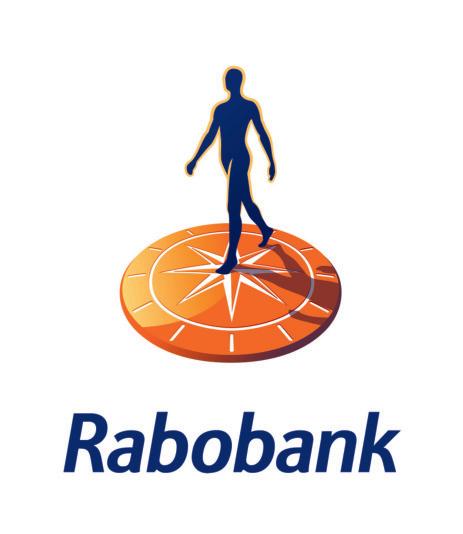
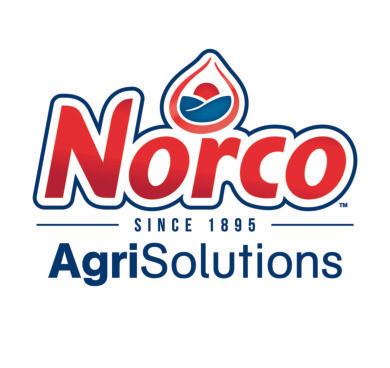


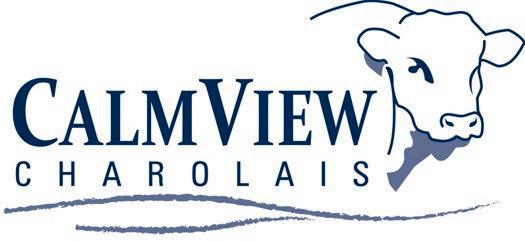
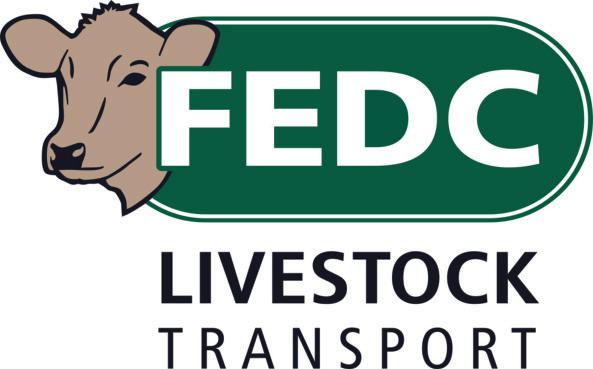

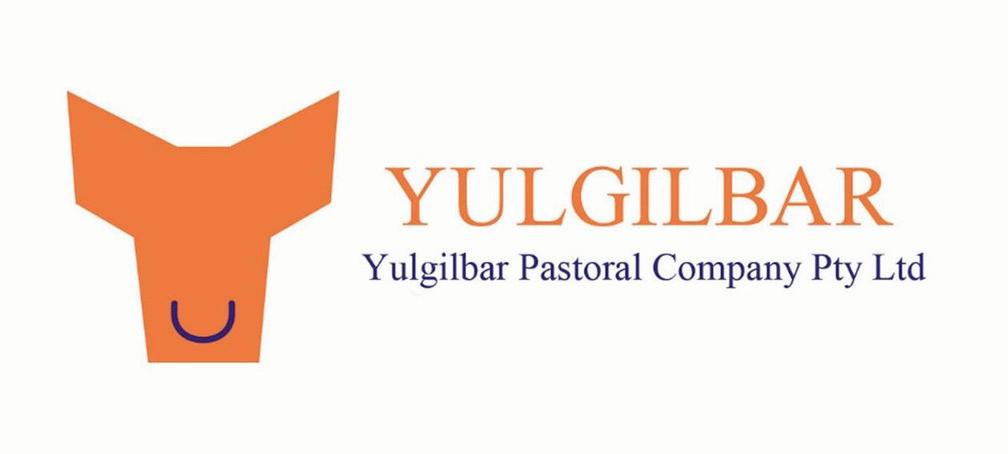

The Murray Regional Strategy Group (MRSG) has remained committed to fostering strong relationships over the past year in a concerted effort to improve water policy and management in the NSW Murray region.
At the MRSG Annual Meeting last week, Chair Geoff Moar highlighted the signifcant progress made in engaging with key stakeholders, leading to enhanced collaboration and a more coordinated approach to water management.
Building Stronger Partnerships
MRSG has successfully cultivated productive relationships with a broad spectrum of policymakers, industry leaders, and government representatives. This has included informative workshops with:
• Andrew McConville, CEO of the Murray-Darling Basin Authority (MDBA).
• Jacqui Hickey, Executive Director of River Management.
• Simon Banks, Commonwealth Environmental Water Holder.
• Various NSW Government departmental staff actively involved in water policy.
Describing these workshops as “very positive and respectful”, Mr. Moar emphasized the importance of open communication and collaborative decisionmaking in addressing
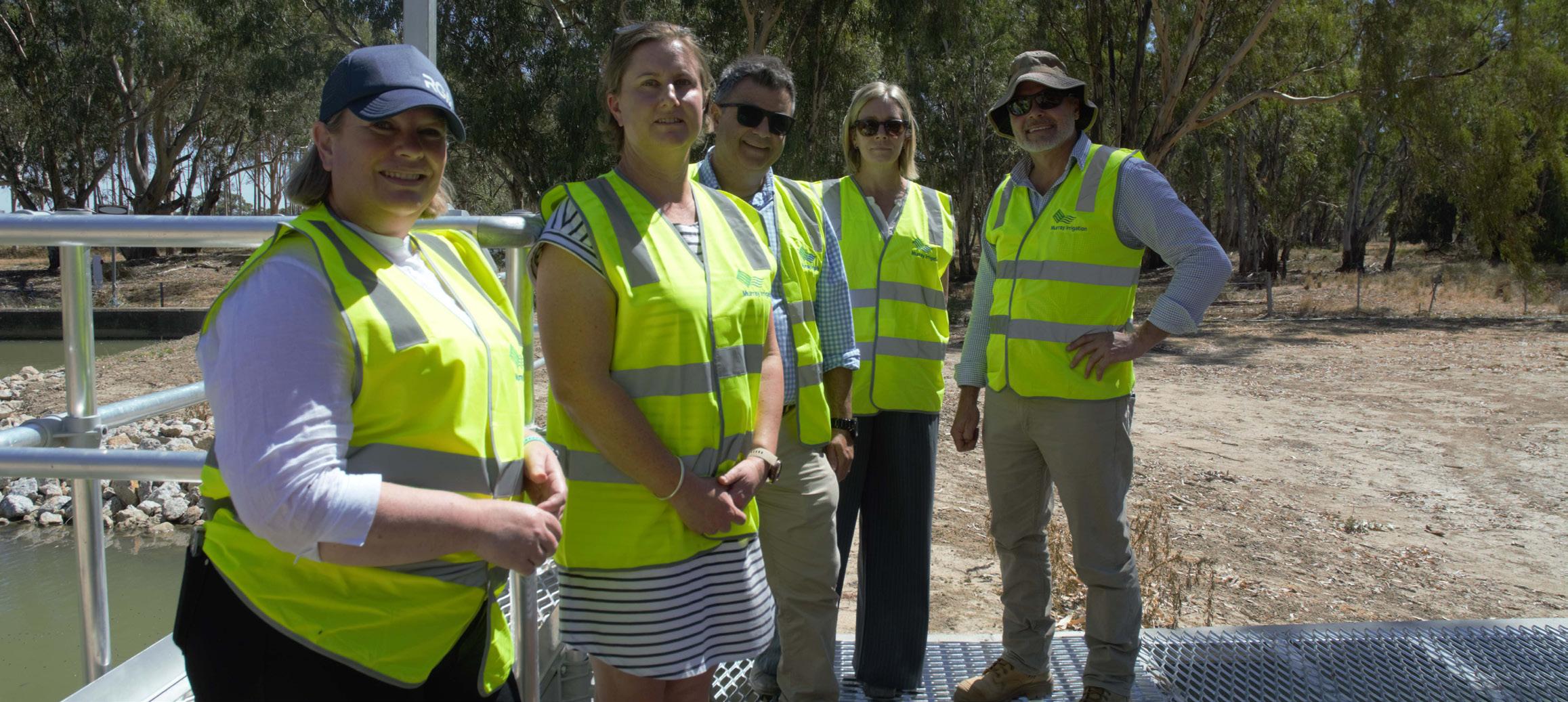
complex water challenges.
Engagement with Political Representatives MRSG has also actively engaged with political representatives at all levels, including local, state, and federal leaders. Local councillors and council staff have been welcomed to meetings and workshops, strengthening ties between regional stakeholders and decision-makers.
Acknowledging the collective effort of MRSG members, Mr. Moar thanked them for their dedication and collaborative approach in tackling water issues. He noted that water policy changes are occurring rapidly, making continuous engagement crucial for the region’s future.
Ongoing Challenges:


Despite the positive strides made in relationship-building, MRSG expressed disappointment over the continued refusal of Federal Water Minister Tanya Plibersek to visit the region and engage directly with local communities.
MRSG has consistently advocated for viable alternatives to federal water buybacks, which have been proven to have negative social and economic impacts on regional communities. A frst-hand visit, Mr. Moar stressed, would provide the Minister with a clearer understanding of the challenges faced by farmers and water users in the NSW Murray region.
Leadership Continuity and Recognition
During the Annual General Meeting (AGM), MRSG reaffrmed its leadership team, ensuring stability in its ongoing efforts:
• Geoff Moar was re-elected unopposed as MRSG Chair.
• Louise Burge was elected Deputy Chair.
• Shelley Scoullar was appointed Secretary/ Treasurer.
On behalf of MRSG members, John Lolicato praised Mr. Moar’s leadership and his unwavering commitment to presenting the NSW Murray Adaptive Road Map to key agencies involved in the Basin Plan implementation. He highlighted the positive impact of MRSG’s advocacy in shaping water policy discussions.
On-Farm Environmental Watering Project
Following the AGM, a general meeting

was held with local council representatives, providing a platform for further discussions on water management.
The event concluded with a bus tour west of Deniliquin, organized by Murray Irrigation Ltd (MIL), to showcase a pioneering on-farm environmental watering project.
Developed and implemented by MIL, the project leverages existing irrigation infrastructure to deliver environmental water into creek systems on private properties. These areas typically would not receive water unless the Murray River fow exceeded 60,000 megalitres per day at Tocumwal. By using the gravity-feed irrigation system, water can now be directed to these creeks even when the Murray is at
normal low fow levels, giving environmental water managers greater fexibility in their operations.
MRSG continues to champion adaptive measures like this, advocating for improved environmental outcomes without resorting to damaging federal water buybacks.
Looking Ahead
With a strong foundation of collaborative relationships, innovative water solutions, and unwavering advocacy, MRSG remains dedicated to securing a sustainable future for the NSW Murray region. The group will continue pushing for practical, locally-driven water management solutions that balance environmental, social, and economic needs.


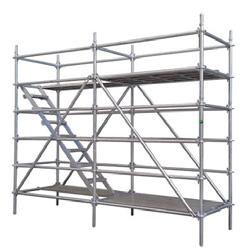



Saturday 22nd March | 10am |
Bogie Axle Trailer and Crate – 9ft x 6ft internal
Howard EHD 210 Slasher
Celli 3m Power Harrow
8 Tyne Yeoman Chisel Plough
New Holland 471 square Bale Loader
J L Smith 3pl Post driver
Elkco Single Tyne Ripper with pipe layer attachment
Smart 500 3pl Fertiliser Spreader
3pl Post Hole Digger with 3 augers
6m folding boom spray arms with nozzles
Robin motor water pump and hoses
Howard walk behind Rotary Hoe
Chainsaw post hole digger
Chainsaw post hole auger
Stihl Blower
Garden line 4 in 1 – Whipper snipper, Chain saw, Hedger, Edger
Quantity of star pickets
Rolls of wire mesh
Lightburn cement mixer
PTO shaft
John Deere Top Link
Backpack nap sack sprayer
Gerry Cans
Galvanized 44 gallon drums
Aluminium Roof Rack
3x Stock Saddles – 1 x Newcombe + bridles, 1 x Syd hill
Wheel barrows
Quantity of used nuts and bolts
Quantity of shovels & bars
Small Lincoln Welder
Large battery charger
Bottle Jacks
Pipe fittings, PVC & Gal
Ladders – various lengths
LOADING FACILITIES AVAILABLE ON THE DAY OF SALE
Terms Strictly: Cash, Cheque or Eftpos, Bid Card System will apply


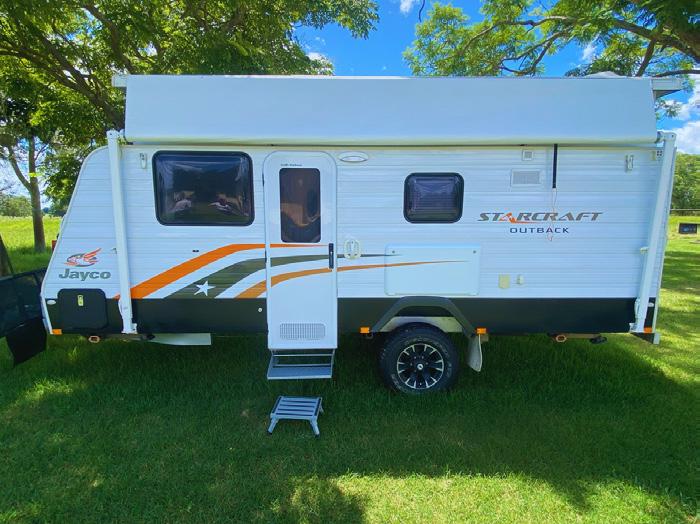
& Window frames
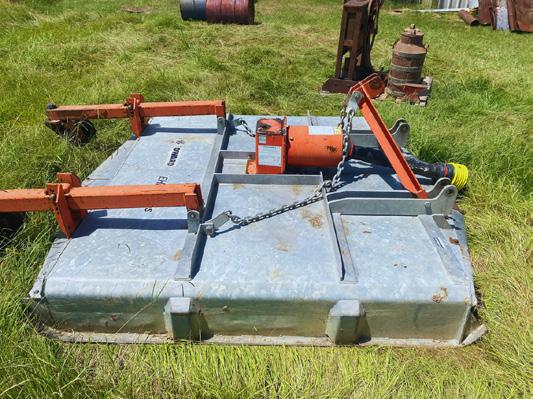
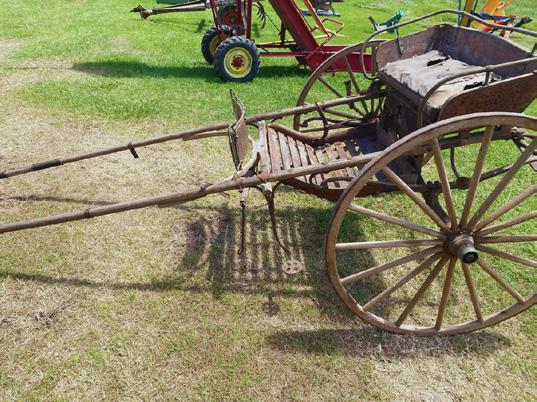
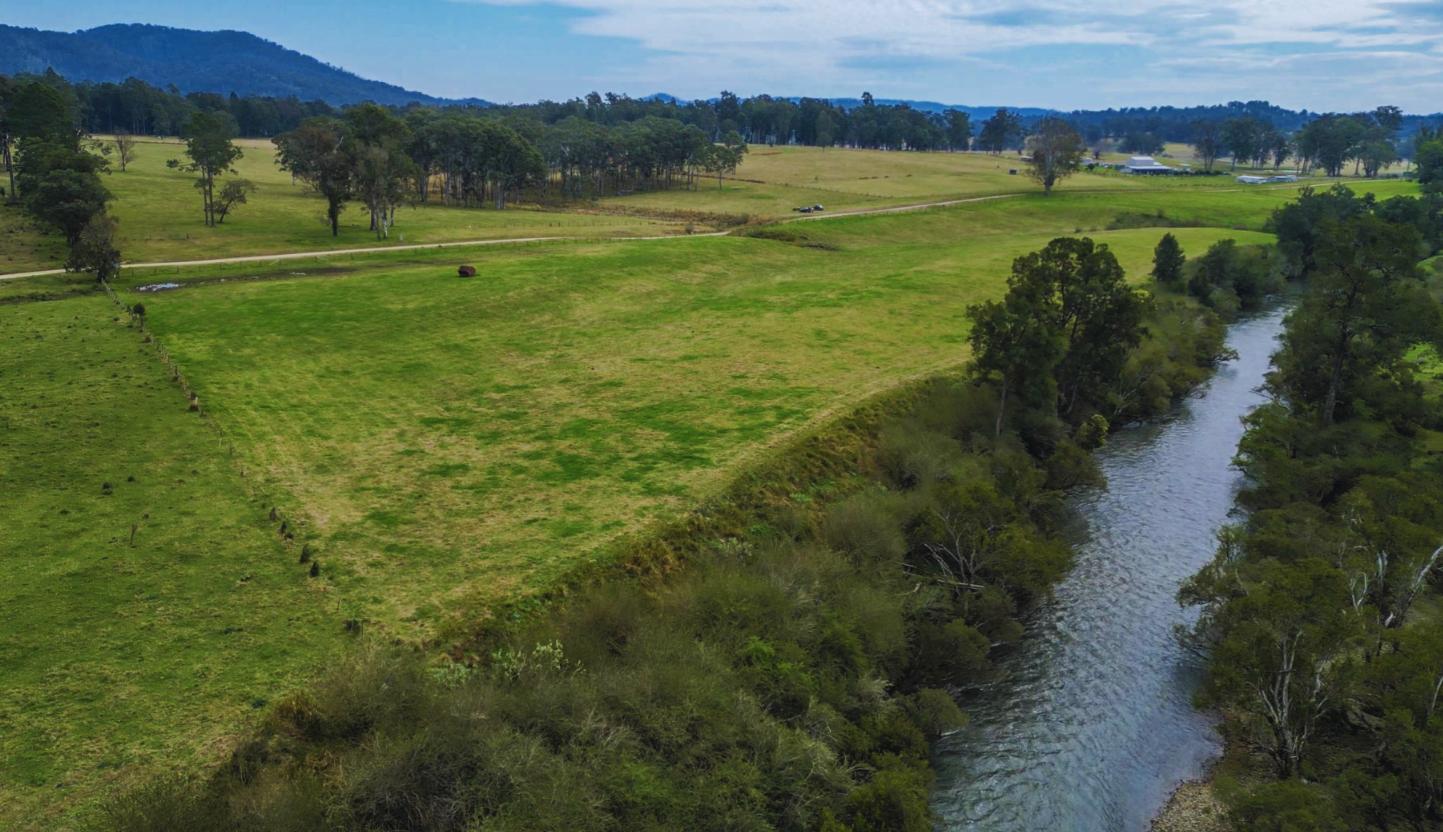

IAN ROGERS
The NSW Department of Primary Industries and Regional Development (DPIRD) and Local Land Services (LLS) are urging cattle producers to remain vigilant following confrmed cases of cattle tick fever on two properties in the North Coast region.
North Coast LLS District Veterinarian, Dr. Phillip Carter, confrmed that the affected cattle were diagnosed with tick fever, Babesiosis, after testing at the DPIRD Elizabeth Macarthur Agricultural Institute laboratory.
“If treatment is delayed, tick fever can be fatal to susceptible animals. Producers
should contact a veterinarian immediately if cattle exhibit symptoms of tick fever,” Dr. Carter said.
“These are the frst confrmed cases of tick fever in NSW this year. During our inspection, we also identifed signs of cattle tick infestation on the affected animals.
“We strongly advise producers to monitor their herds for both cattle tick and tick fever, as other animals may be infected but not yet showing symptoms.
“Unexplained cattle deaths can often be the frst indicator of tick fever. Other symptoms to watch for include lethargy, depression, excessive salivation, red urine, elevated temperature, jaundice,
The NSW Irrigators’ Council (NSWIC) is urging landholders to review newly released wetland maps for private properties, published today by the Department of Climate Change, Energy, the Environment and Water. Feedback is due in just two weeks, by 23 March.
NSWIC CEO Claire Miller acknowledged the signifcant improvements made to the revised maps compared to the errorridden versions released last November, which

and anaemia.
“Cattle tick thrives in warm, humid conditions, making biosecurity measures critical in preventing further outbreaks. Producers should conduct regular tick checks, particularly when preparing cattle for autumn sales.”
DPIRD Cattle Tick Operations Leader, Larry Falls, emphasized the importance of early detection and prompt reporting.
“Producers should report any signs of cattle tick immediately by calling the NSW Biosecurity Helpline at
1800 680 244,” Mr. Falls said.
“Early intervention is crucial in reducing the spread and impact of both cattle tick and tick fever. NSW’s movement records outline mandatory biosecurity requirements for cattle brought from tick-infested areas into NSW or moved from tick-restricted properties within the state.
“Following these biosecurity measures helps protect livestock, prevent disease spread, and reduce costs and losses for producers.”
Both cattle tick and tick fever are notifable diseases under NSW biosecurity legislation, reinforcing the shared responsibility between industry, producers, and
government to keep NSW tick-free.
Cattle tick and tick fever pose signifcant economic risks to northern Australia’s cattle industry, leading to potential losses in livestock, decreased production, trade restrictions, and costly treatments.
Producers who suspect tick fever or fnd sick or deceased cattle should immediately contact their LLS district veterinarian or call the Emergency Animal Disease Hotline at 1800 675 888.
For more information on cattle tick and tick fever, visit the NSW DPIRD website: NSW DPIRD Cattle Tick Information.
incorrectly classifed irrigation channels and depressions in cropping felds as wetlands requiring additional protection.
“It is encouraging that landholder concerns have been heard, with hundreds of erroneous wetlands removed from the revised maps,” Ms Miller said.
“The original mapping was clearly unworkable, and while the revised maps are far more accurate, the Department must ensure all affected landholders are notifed and fully understand any



impacts on water use rules.”
Call for More Consultation Time
NSWIC has strongly criticised the two-week feedback window as inadequate and is instead advocating for a 12-month consultation period to:
• Personally notify landholders of changes
• Verify wetlands through ground-truthing
• Ensure landholders understand future water use obligations before wetlands are offcially gazetted and incorporated into water
sharing plans Concerns Over Previous Mapping Errors
NSWIC is also encouraged by the Department’s commitment to review similarly fawed wetland maps in six other water sharing plans gazetted in mid-2024, including the Unregulated Border Rivers and Unregulated NSW Murray.
“This whole debacle could have been avoided if the Department had done proper groundtruthing from the start,”
Ms Miller said.
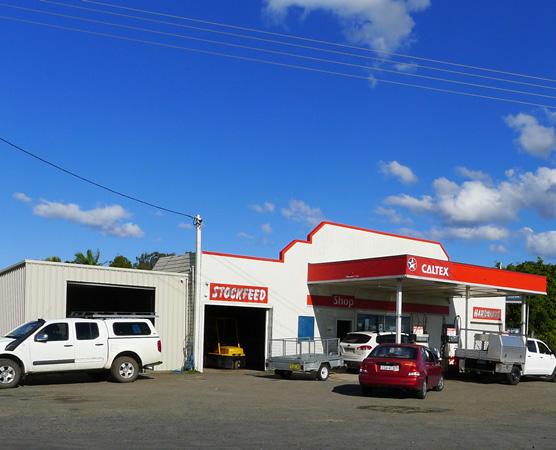
“Instead, time and resources have been wasted, only for us to end up almost exactly where we began.”
Next Steps for Landholders
While the revised maps are an improvement, many wetlands remain listed in key documents like Floodplain Management Plans without proper consultation. NSWIC is now calling for a 12-month engagement process to ensure every affected landholder:
• Is fully informed about their obligations
• Has an opportunity to provide input
• Can help create more accurate, workable plans for managing wetlands
“Today’s release is a step in the right direction, but now the focus must be on ensuring landholders are properly consulted before any fnal decisions are made.”
Landholders are urged to review the maps immediately and provide feedback before 23 March.
For further details and to submit feedback, visit [NSWIC’s website].






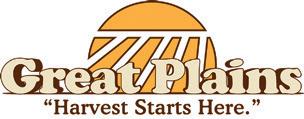



Gardening enthusiasts and landscapers are always looking for durable, cost-effective, and visually appealing ways to shape and support their outdoor spaces. One increasingly popular solution is the gabion rock retaining wall, a strong and stylish structure that is easy to install and perfect for preventing soil erosion, creating terraced levels, or simply adding a unique aesthetic to your garden. Whether you're a seasoned DIYer or a novice gardener, here’s how you can build your own gabion retaining wall to enhance your outdoor space.
What Is a Gabion Rock Retaining Wall?
A gabion wall consists of wire mesh baskets flled with rocks or stones. Originally used in civil engineering and erosion control, gabions have become a staple in modern landscaping due to their natural look and durability. These walls allow for proper drainage, reducing
hydrostatic pressure that can cause traditional retaining walls to fail. Plus, they require minimal maintenance and can last for decades.
Why Choose a Gabion Retaining Wall?
Gabion walls offer several advantages over traditional brick or concrete retaining walls:
• Eco-Friendly: The stones can be sourced locally, reducing environmental impact.
• Cost-Effective: Gabion baskets and rocks are often cheaper than bricks and cement.
• DIY-Friendly: You can install them without professional help.
• Drainage Effciency: Water fows freely through the rocks, reducing the risk of damage from water build-up.
• Aesthetic Appeal: The natural stone look blends well with garden landscapes.
MATERIALS NEEDED
Before you begin, gather the following materials:
• Gabion Baskets: Pre-made wire mesh cages (galvanised steel


is recommended for durability).
• Rocks or Stones: Choose local stones, river rocks, or crushed concrete for flling.
• Wire or Clips: Used to connect and secure the gabion baskets.
• Gloves and Safety Gear: To protect your hands when handling the wire and rocks.
• Shovel and Level: For site preparation.
• Geotextile Fabric (Optional): To prevent soil erosion behind the wall.
Step-by-Step Guide to Building Your Gabion

Wall
Step 1: Plan and Prepare the Site
Start by choosing the location and determining the length, height, and width of your retaining wall. Measure and mark out the area using stakes and string. Remove any grass, weeds, or debris, and level the ground to provide a stable foundation.
For added stability, you can dig a shallow trench (around 10–15 cm deep) and fll it with a compacted gravel base. This will help support the weight of the wall
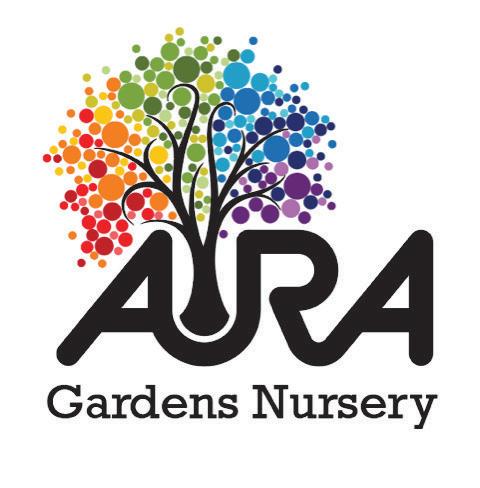
and improve drainage.
Step 2: Assemble the Gabion Baskets
Lay out the wire mesh baskets and connect them using the provided clips or wire ties. Ensure they are securely fastened at the edges to maintain their shape when flled with stones.
Step 3: Position the Gabion Baskets
Place the assembled gabion baskets in the prepared area. If building a taller wall, stagger the baskets to create a more stable structure. Secure them to the ground with stakes if necessary to prevent movement during flling.
Step 4: Fill the Gabion Baskets with Rocks
Start flling the baskets with your chosen rocks. Use larger, more attractive stones on the visible outer layer and smaller rocks or gravel in the centre to reduce gaps and improve stability.
Arrange the rocks evenly to maintain a uniform look.
Step 5: Secure the Baskets and Layer If Needed
Once flled, close the
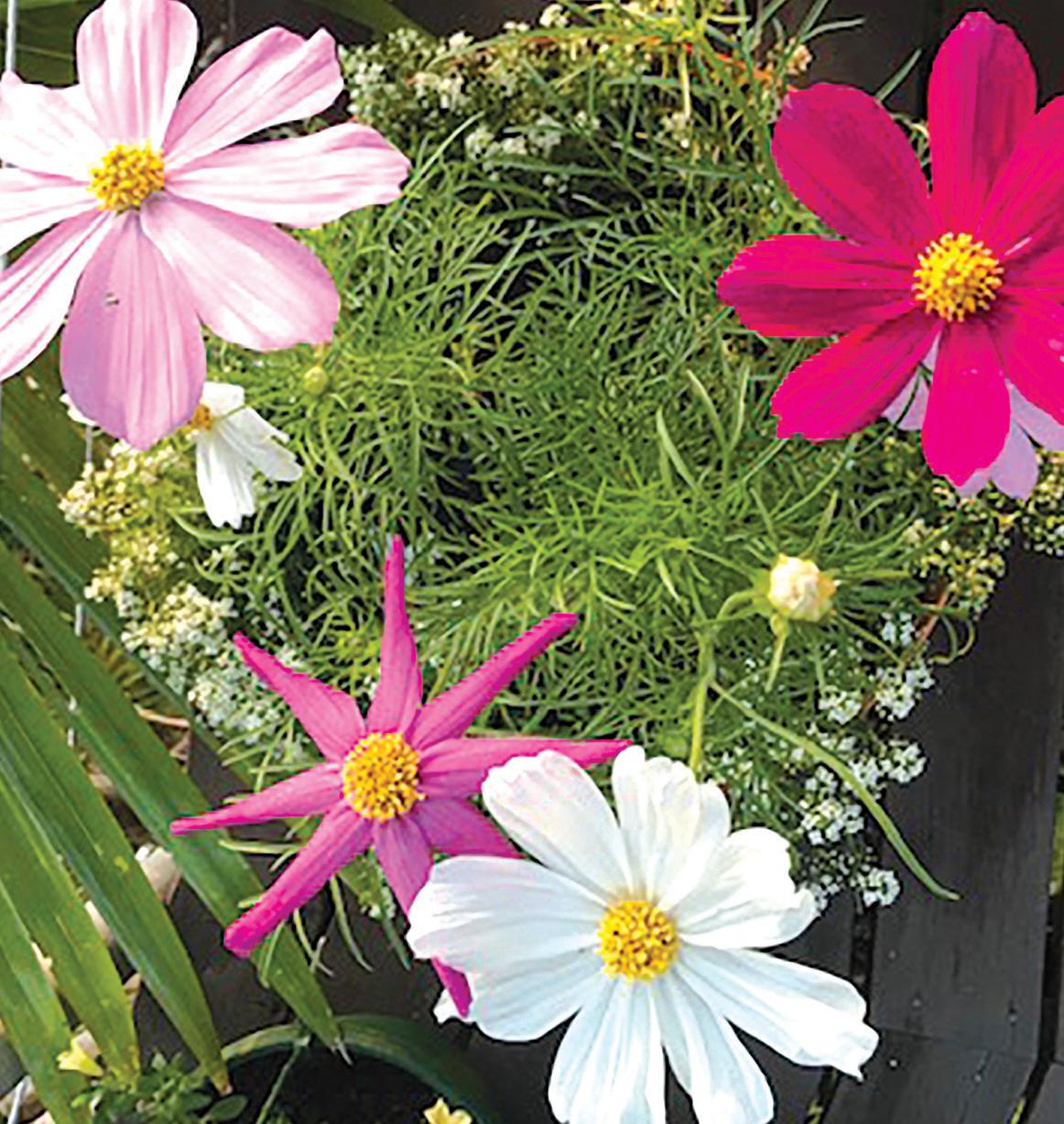
tops of the gabion baskets and secure them with wire ties or clips. If building a multi-layered wall, place the next set of baskets on top, aligning them properly for balance. Continue flling and securing each layer until you reach the desired height.
Step 6: Finish and Landscape
Check that the wall is level and stable. If desired, add plants or decorative elements around the wall to integrate it into your garden design. Creeping plants or succulents can be planted in gaps between the rocks for a softer, more natural look.
Maintenance Tips
Gabion retaining walls are low-maintenance, but occasional checks can help extend their lifespan:
• Inspect the wire mesh for any signs of rust or damage.
• Refll gaps with additional rocks if settling occurs.
• Trim any plants growing into the wall to maintain its appearance.
Final Thoughts
Building a gabion rock retaining wall is a rewarding DIY project that offers both function and beauty to your garden. Whether used to prevent soil erosion, create levels, or simply add texture to your landscape, these walls are an excellent choice for gardeners looking for a long-lasting and sustainable solution. With the right materials and a bit of effort, you can transform your outdoor space into a well-structured and visually appealing retreat.
Passed away peacefully surrounded by her cherished family on 2nd March 2025, aged 80 years.
Beloved Mother of Leisa, Paul, Emily and Katie.
Family and friends are warmly invited to attend a requiem mass, to be held at the St Thomas More’s Catholic Parish, 71A Ramsay Street, South Toowoomba, service commencing at 11:30am, Friday, 14th March 2025.
Please wear a touch of green in memory of Sue.
If unable to attend, the service will be web-streamed please go to https://www.burstows.com.au/tribute-centre
“Always loved, always remembered”






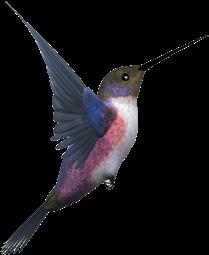









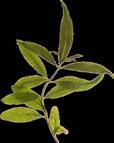



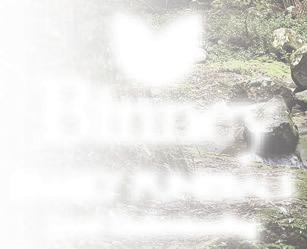




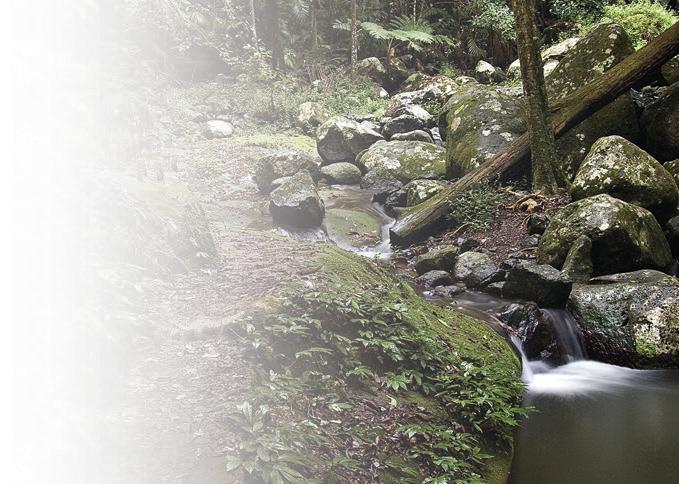
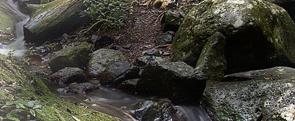












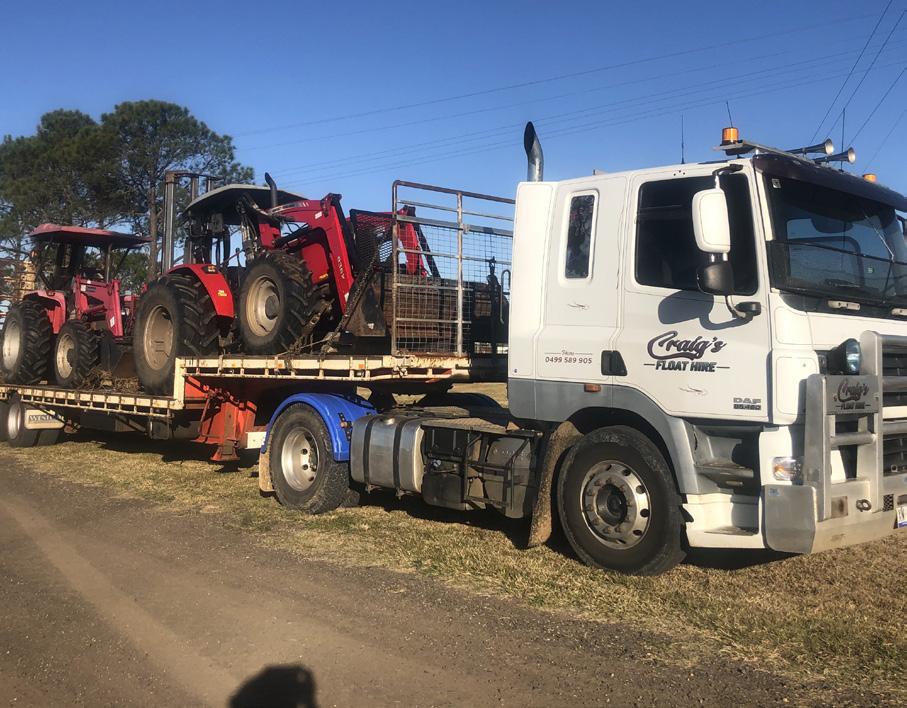
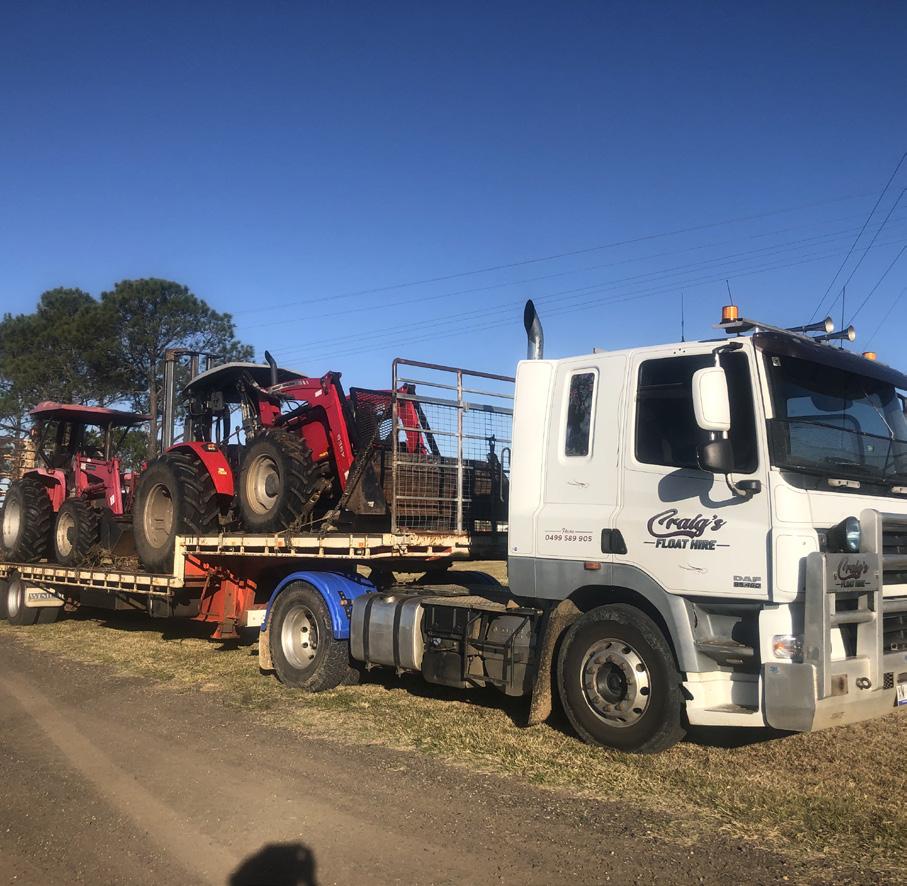
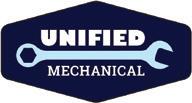






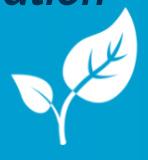



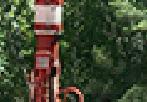



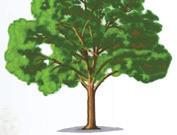
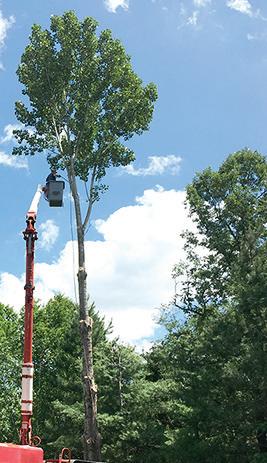
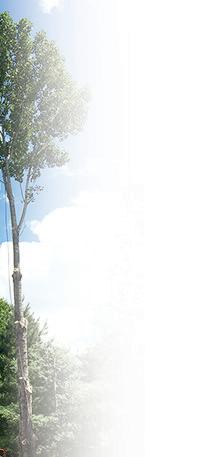


Northern Rivers District:
Partly cloudy. Medium chance of showers, most likely in the morning and afternoon. Light winds becoming east to southeasterly 15 to 20 km/h during the afternoon then becoming light during the evening. Thursday. Partly cloudy. Medium chance of showers, most likely in the morning and afternoon. Light winds becoming easterly 15 to 20 km/h during the afternoon then becoming light during the evening.
Northern Tablelands District: Cloudy. Medium chance of showers, most likely in the morning and afternoon. The chance of a storm in the south. Winds easterly 15 to 20 km/h.
Thursday. Partly cloudy. The chance of morning fog. Medium chance of showers, most likely in the afternoon. Winds easterly 15 to 20 km/h becoming light during the morning then becoming east to southeasterly 15 to 20 km/h during the afternoon.
New South Wales:
Shower or two about the coast, stretching into the northern inland. Chance of storms on and west of the divide. Daytime temperatures near average for much of the state, above to well above average in the far west including the Riverina. Northeast to southeasterly winds about the east, fresh at times along the coast. East to southeast winds elsewhere. Thursday. Possible showers about the east and northwestern inland. Chance of storms about the northern inland. Daytime temperatures near average in the northeast, tending above
average through the remainder. Light and variable winds inland. Byron Coast: Winds: Easterly 10 to 15 knots. Seas: Around 1 metre. Swell: Easterly around 1 metre. Weather: Partly cloudy. 50% chance of showers.
Coffs Coast:
Winds: East to northeasterly 10 to 15 knots tending east to southeasterly below 10 knots during the morning. Seas: Below 1 metre. Swell: Easterly around 1 metre. Weather: Partly cloudy. 50% chance of showers.
Gold Coast Waters: Winds: Easterly 15 to 20 knots. Seas: Around 1 metre. Swell: Easterly around 1 metre inshore, increasing to 1 to 1.5 metres offshore. Weather: Partly cloudy. 50% chance of showers.
Cyclone Alfred robbed Clarence cricketers of the perfect warm up to this weekend’s semi-fnals, washing out the fnal round of competition matches at the weekend.
Play had been scheduled for Saturday and Sunday, giving cricketers a taste of the rigours of back-to-back days of play, which characterises fnals games.
The washouts also cemented the semi-fnal positions, with Harwood the runaway minor premiers, followed by South Services/ Westlawn, Lawrence and Tucabia Copmanhurst in fourth.
This weekend, a certain ex-tropical cyclone permitting, Harwood and Souths/Westlawn will clash in the qualifying fnal and Lawrence and Tucabia meet in the elimination fnal.
It’s diffcult to see anything other than a Harwood win in the big game, with the premiers batting and bowling depth rising to meet whatever challenges are thrown at them.
Early in the season they set a pattern of building massive frst innings

totals and crushing opponents with tight bowling and scoreboard pressure.
But as happened just a couple of week ago, when conditions turned in the bowlers’ favour, Harwood adapted its game quickly and ruthlessly.
Facing the same opponent they will meet on Saturday, 40 wickets fell in a game where neither side topped 100, but Harwood won outright, by 42 runs.
After a couple of wet
weeks, it would not surprise to see wickets provide help to the bowlers.
While this can close the gap in class between teams, Souths/Westlawn would need everything to go its way.
They do have a trump card in their veteran opening bowler Nathan Blanch, who was lethal in the last match, taking 11-39 for the match.
The Achilles heel for Souths/Westlawn has been their batting, which has been brittle
and overly reliant on a classy all rounder Dylan Cleaver.
Harwood’s bowling has an answer for just about every surface. Their openers Troy Turner and Duncan Fisher have consistently taken early wickets.
In champion allrounder Ben McMahon, they have the ideal frst change bowler who can either seek wickets or bowl tightly on demand.
And in Corey Lewis they have a stump-tostump medium pacer
Success occurs when preparation meets opportunity, so in sport, is there such a thing as a fuke?
Was it a fuke that Glenn Maxwell was able to rocket deliveries to and over the boundary with a still head, strong wrists and fast hands, when body cramps made footwork negligible in his epic match winning innings of 201 against Afghanistan in the ODI World Cup?
Was it a fuke that Nathan Cleary and the Penrith Panthers were able to overcome an 18 point defcit in the NRL Grand Final and snatch victory from the jaws of defeat against the Brisbane Broncos in 2023 and then follow up

the next season with an historic four-peat?
Was it a fuke that, with South Africa needing just one run to win, Australia’s Damien Fleming was able to restrict the scoring options of the big hitting Lance Klusener, creating pressure that resulted in that calamitous fnal run
out with Allan Donald, in the dramatic 1999 ODI World Cup cricket semifnal?
In these sporting scenarios and on many more occasions, years of training in perfecting muscle memory, refex skills and ftness gets an athlete over the fnishing line and on to the
podium.
In the case of Maxwell, he spends hours practicing a batting drill where you don’t move your feet, an exercise that helps generate fast hands and greater bat speed. When footwork deserted him against Afghanistan in that crucial WC match, Maxwell simply went in training mode and his muscle memory took over.
The great martial arts legend Bruce Lee once said, he didn’t fear the man who practiced 1,000 kicks, but, he feared the man who practiced a kick 1,000 times. So what may appear to be a fuke to sports fans, may just be the result of a lot of dedicated hard work and practice.
game goes straight through to the grand fnal on March 29, but the loser enjoys a second chance, taking on the winner from the elimination fnal the following week.s
In the elimination fnal, last season’s grand fnalists Lawrence take on Tucabia Copmanhurst with honours even so far this season.
In round 2 Lawrence dominated Tucabia with a 101-run drubbing based around a seasonbest innings of 80 from veteran opener Mark Ensbey.
But Tucabia turned the tables in round 7 comfortably chasing down Lawrence’s modest 116 for sixwicket win.
who has proved lethal on helpful surfaces or if batters take him too lightly.
The versatility also includes a classy legspinner in Jacob McMahon, who swept all before him in the frst half of the season, where he racked up 30 wickets before Christmas.
Conditions have favoured the seam attack since then, but he would still be among the competition’s leading wicket takers.
The winner of this
Semi-fnal cricket suits the Lawrence style of batting out their overs and building competitive scores.
Tucabia have run hot and cold this season with key players unavailable at time.
But with their strongest team on the paddock, they have enough big game players to be a threat that Lawrence cannot take lightly.
The season is on the line for both teams as the winner goes through to the preliminary fnal the following week.
the Hyundai Australian Boardriders Battle Grand Final Presented by NRMA Insurance
BURLEIGH HEADS, QLD Surfng Australia is pleased to confrm that the Hyundai Australian Boardriders Battle Grand Final, presented by NRMA Insurance, has been offcially rescheduled to April 12-13, 2025, at Burleigh Heads on the Gold Coast.
The postponement was necessary due to Cyclone Alfred, and Surfng Australia has worked closely with event partners and local authorities to secure a new date that ensures a safe and successful competition.
The Hyundai Australian Boardriders Battle Grand Final is the premier event in Australian club surfng, bringing together the country’s top boardrider clubs, World Champions, and Olympians to compete for national glory. The rescheduled event promises the same elite-level action, thrilling matchups, and world-class atmosphere.
Updated Event Details Dates: April 12-13, 2025
Location: Burleigh Heads, Gold Coast
Format: Australia’s top Boardrider clubs, World Champions, and Olympians competing for the national title
We appreciate the patience and support of competitors, clubs, and event partners during this time and look forward to an unforgettable Grand Final. Further event details will be announced in the coming weeks. For offcial updates, visit Surfng Australia’s website and social media channels.





AU$6,500 Brand New field quip slasher, 6ft, 75hp bare co gearbox, 5mm GAL deck, adjustable skids, friction disc and PTO shaft. 2 in stock ready to go



AU$22,600 Brand new Solis S26, 26hp Mitsubishi diesel engine, hst transmission, 4wd, power steering, industrial tyres, awesome little machine, 5 year warranty, 2 available for immediate delivery.
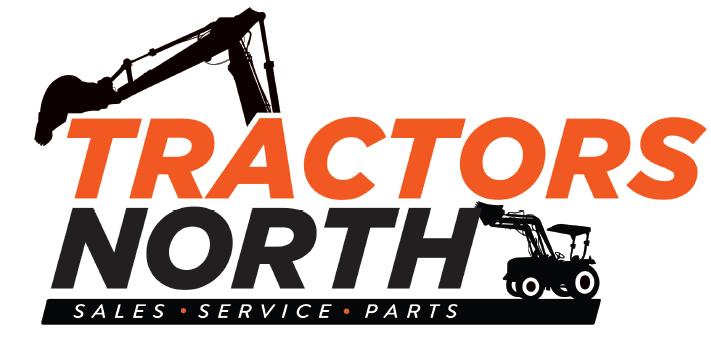

New Bad Boy mower Elite 54 inch
6ft slasher new 2024 Solis s26h 2023 Branson 2500h
$28,500 New Branson 2500h, (25hp) 4 in 1 loader, hst transmission with auto throttle, 3 cylinder diesel engine, 4wd, power steer, industrial tyres, 4 in 1 loader, 1.25m slasher. 3 year commercial warranty, made in South Korea.

AU$13,695 Brand new Bad Boy 54inc Elite zero turn. 2 year 200 hour warranty, made in the USA, front suspension, dual Hydro gear ZT -31k00 drive system. 4.5mm fabricated deck with reinforced edges. Peer spindles, 25l fuel tank. Heaps of other sizes and models in stock
